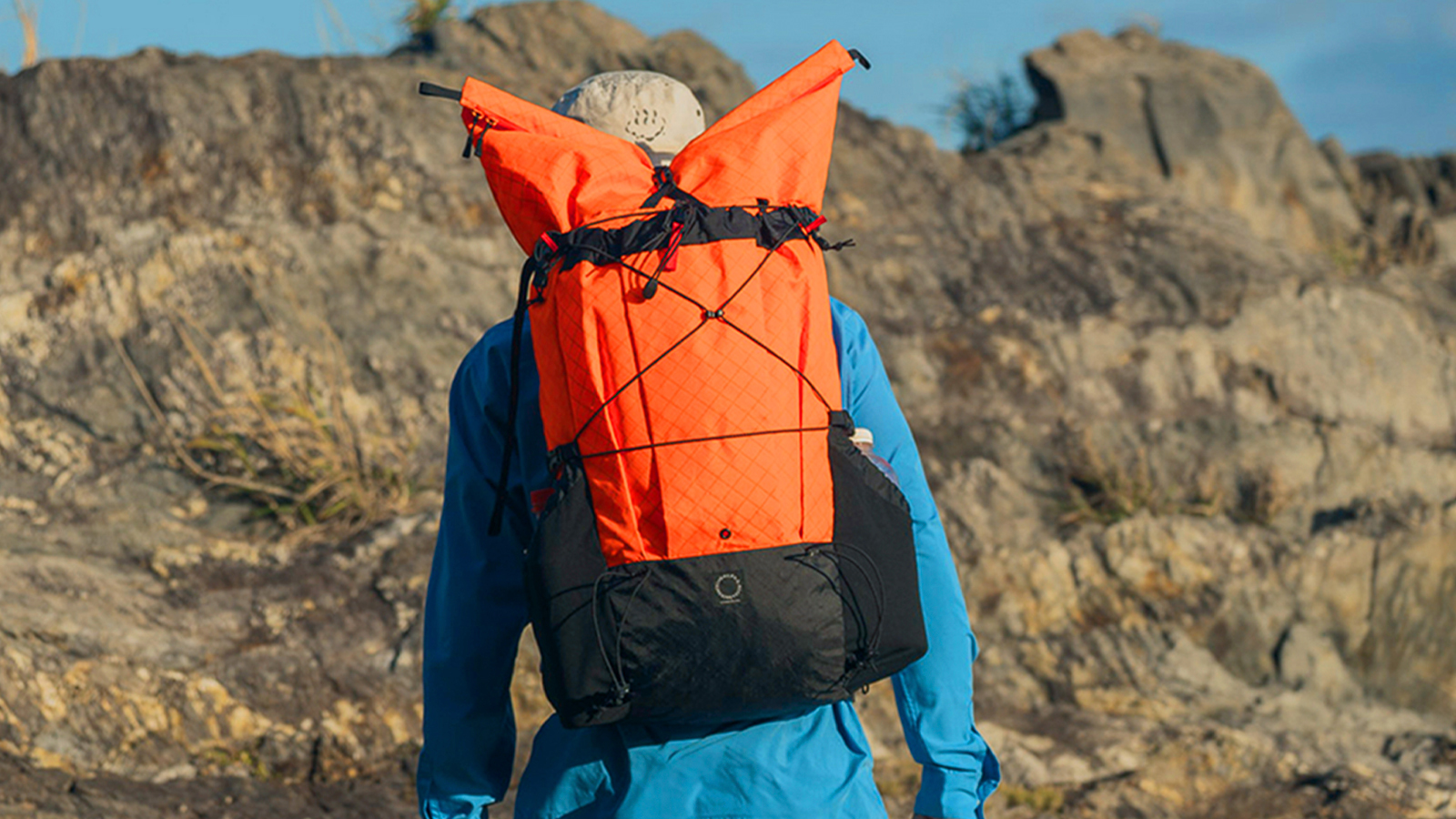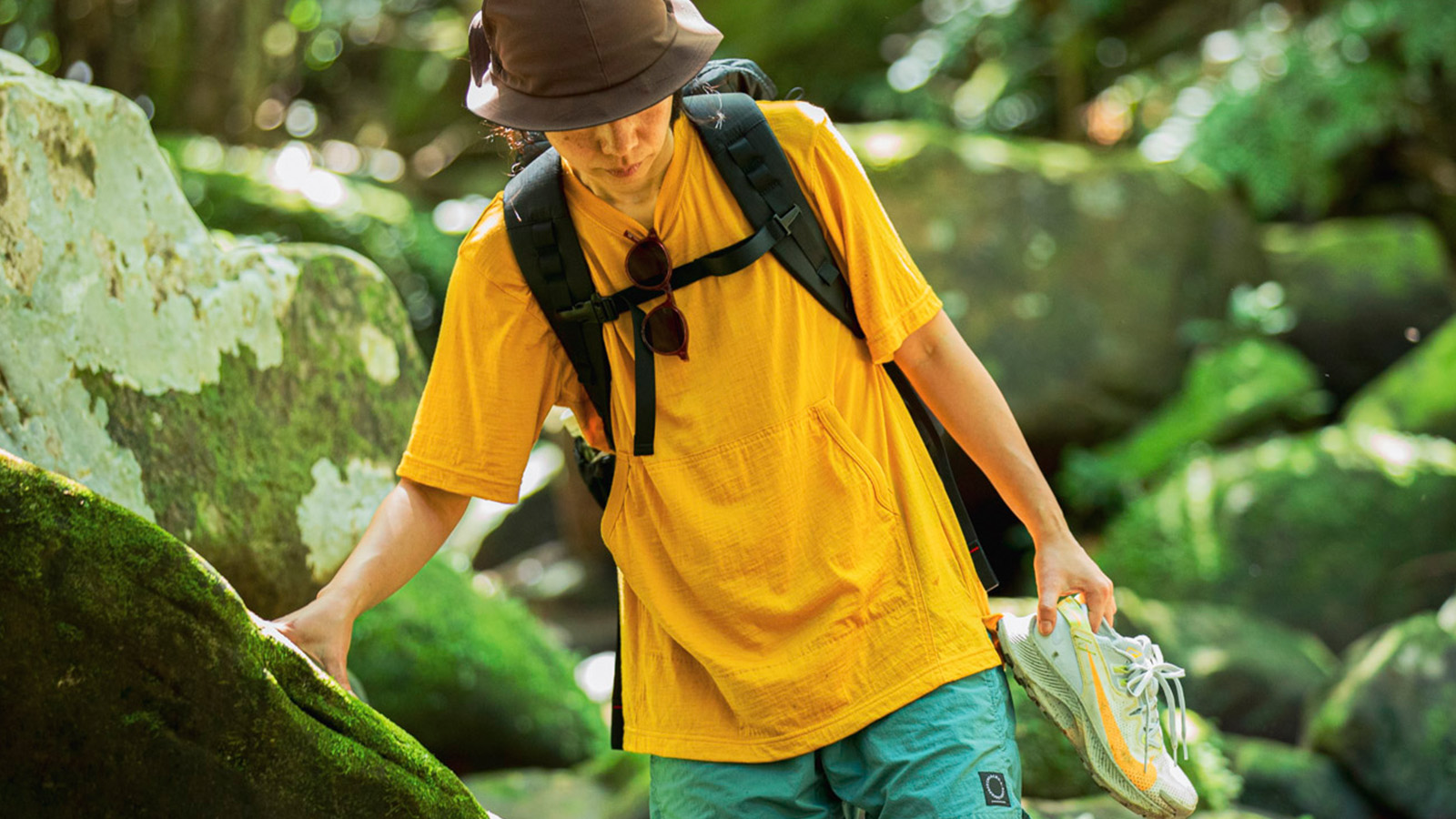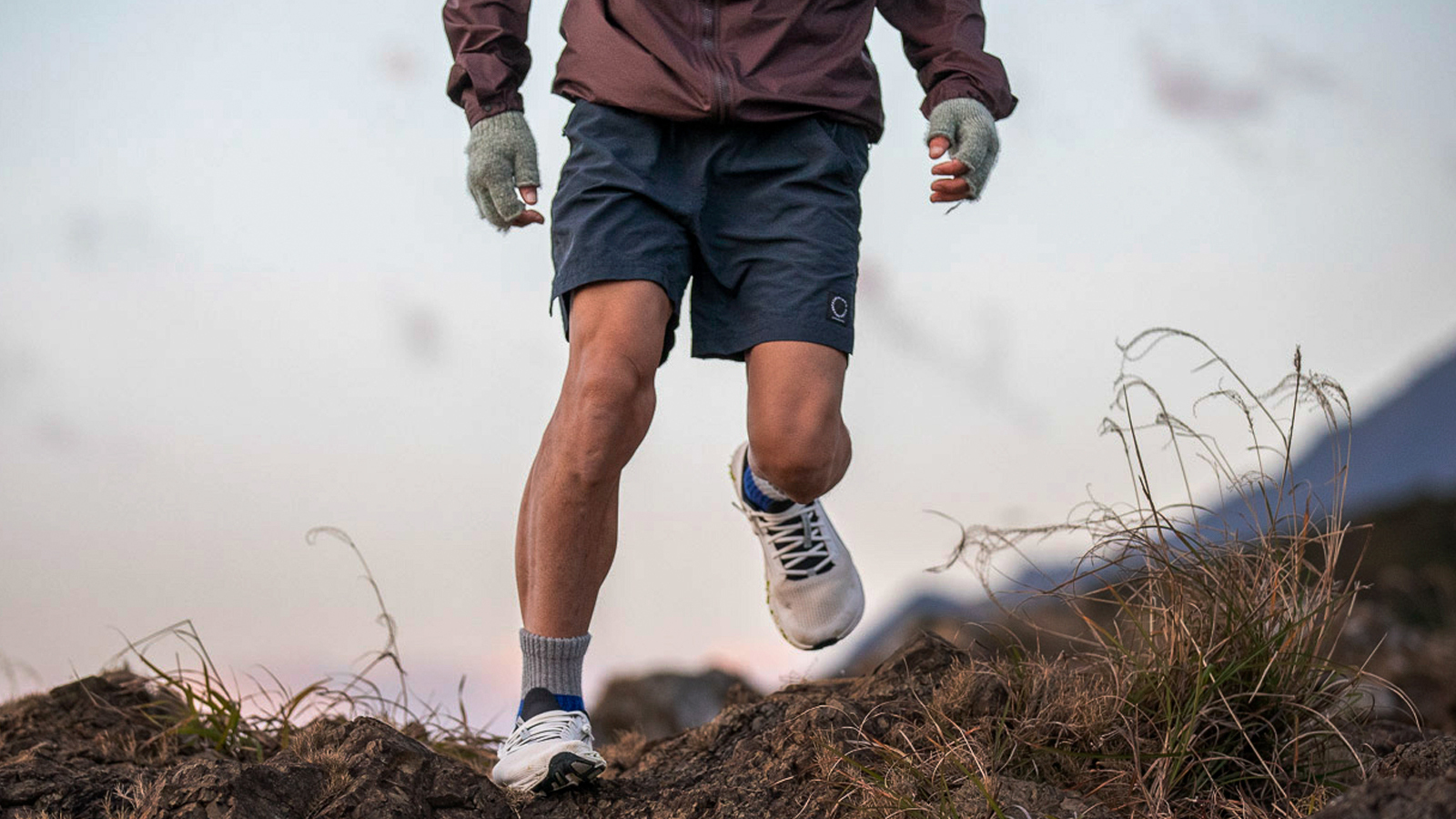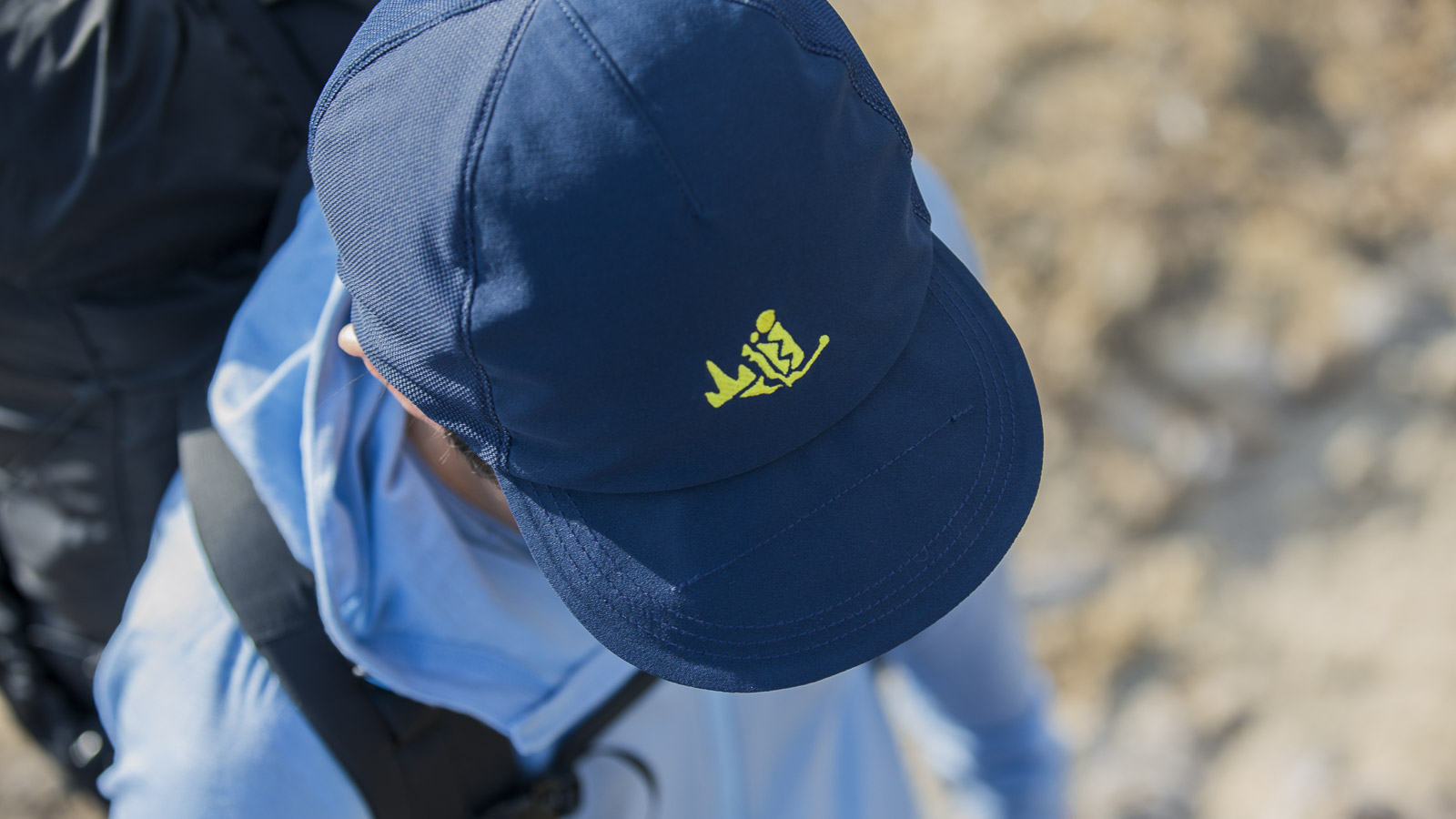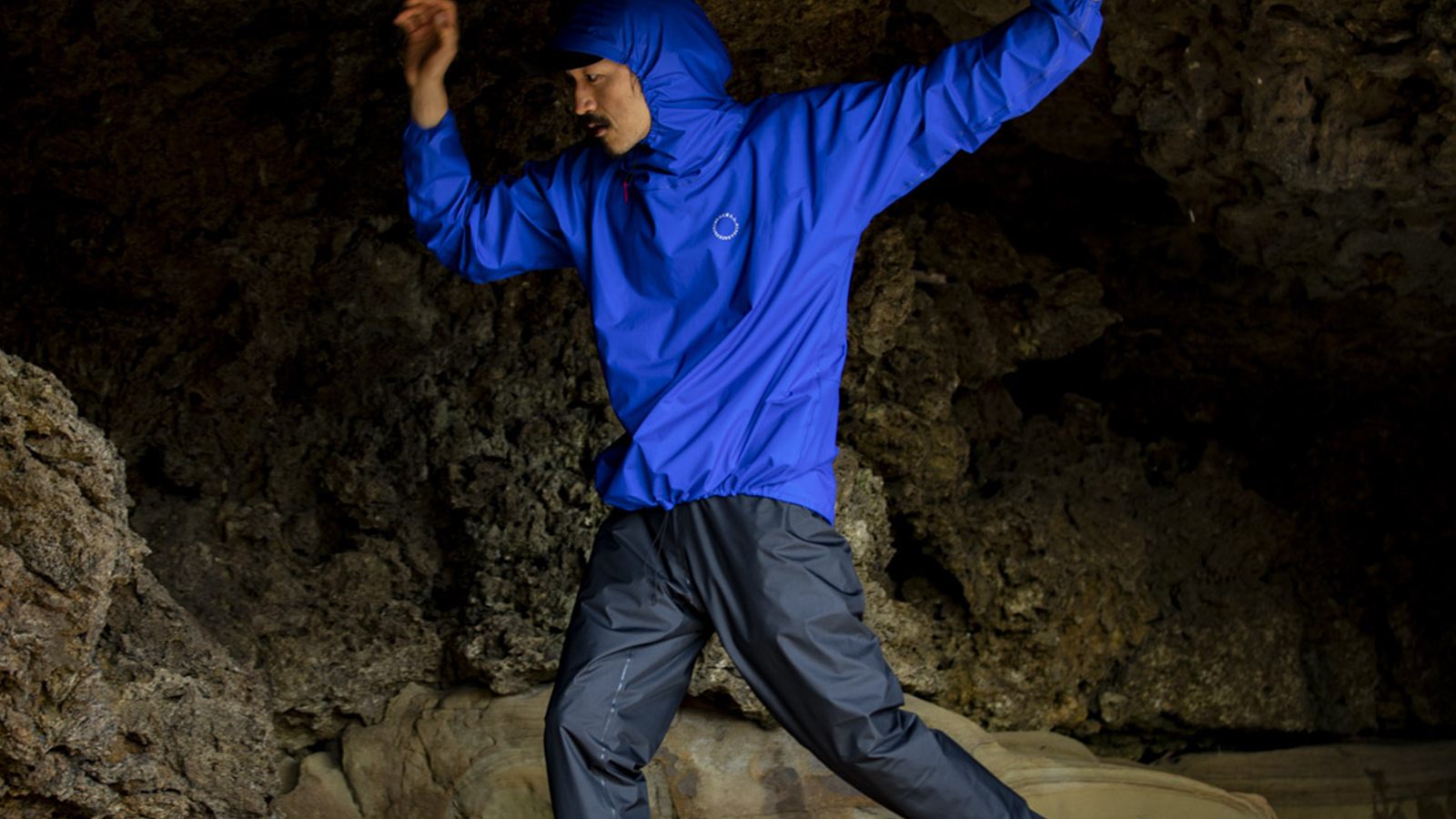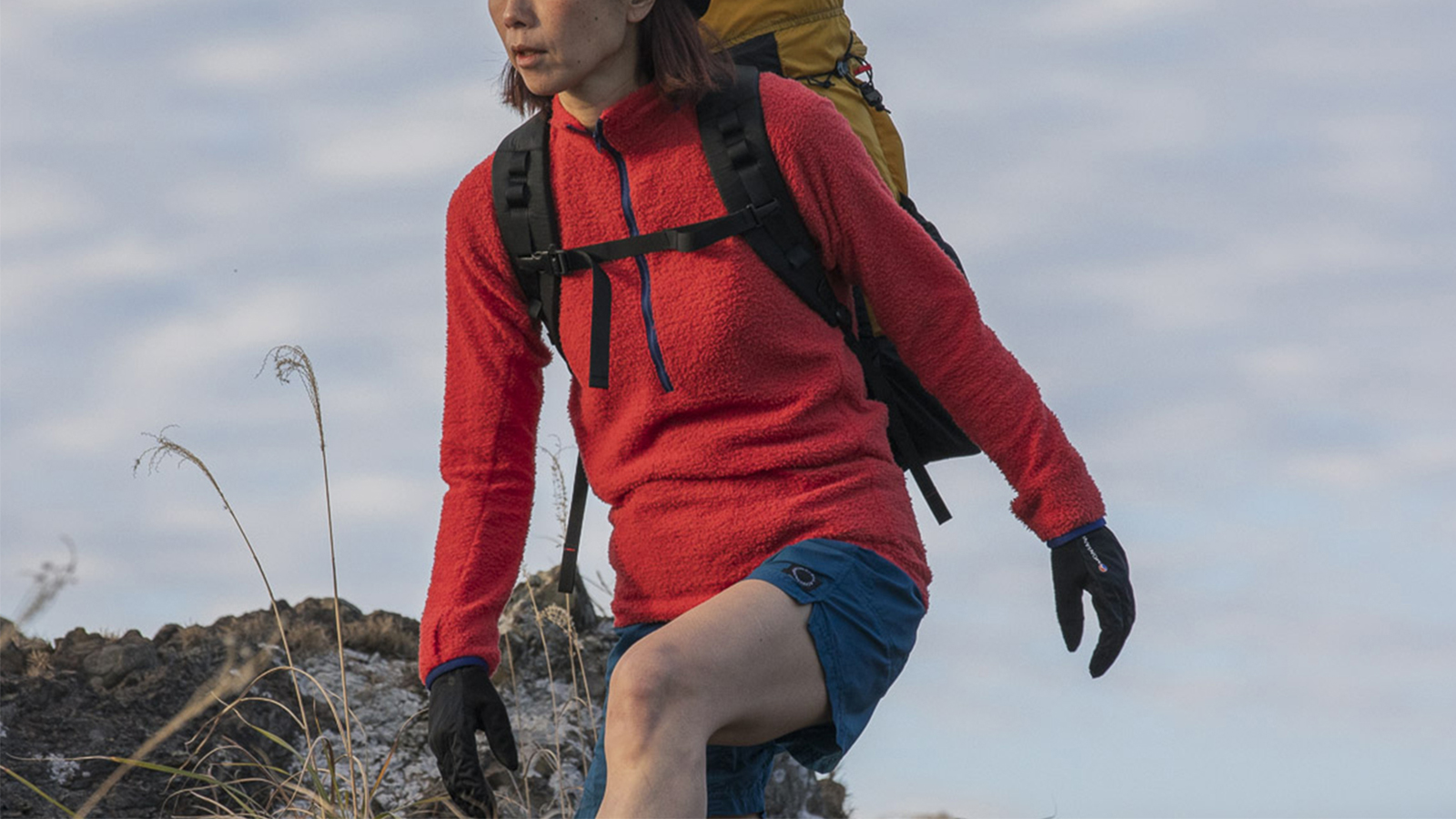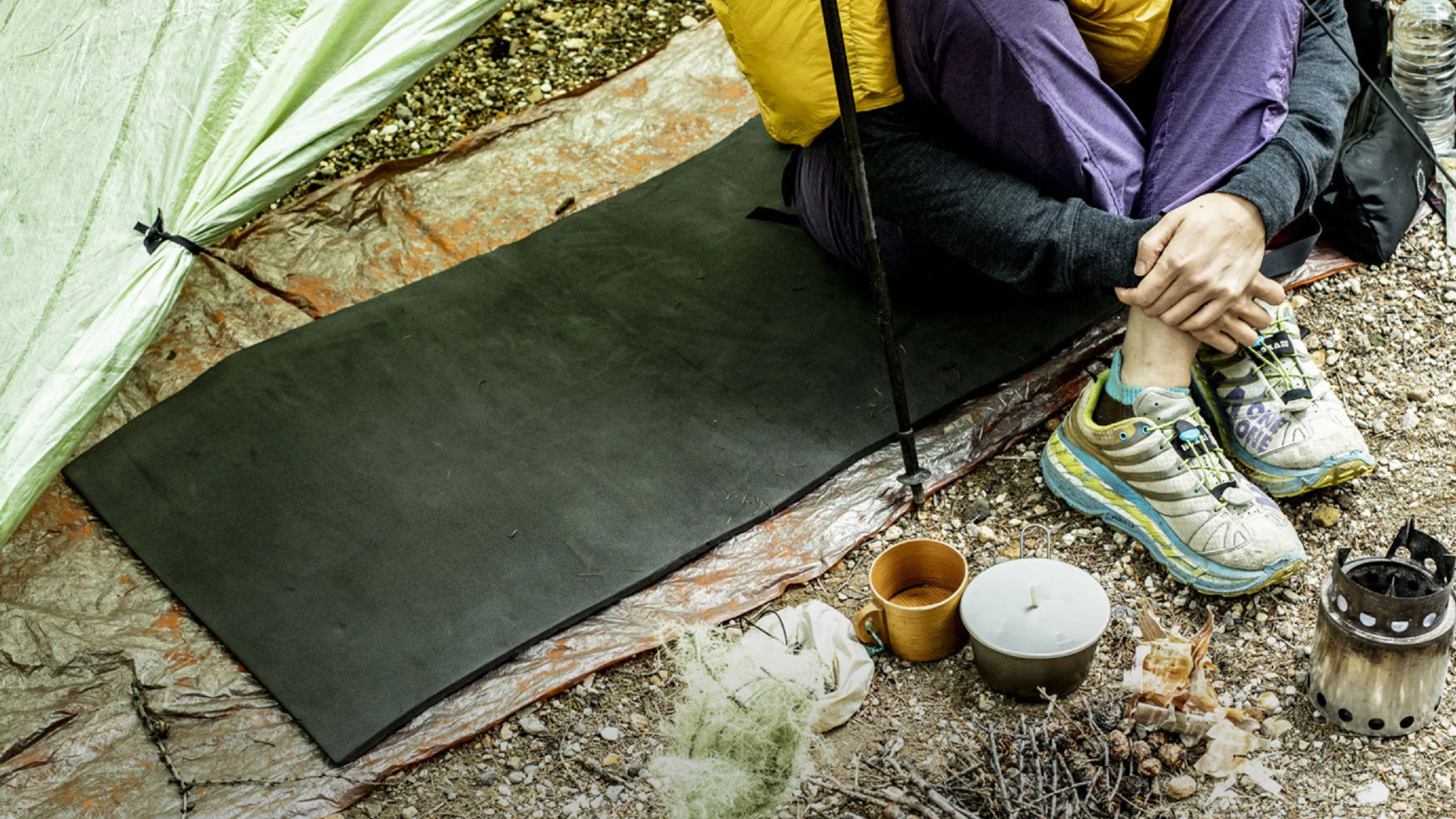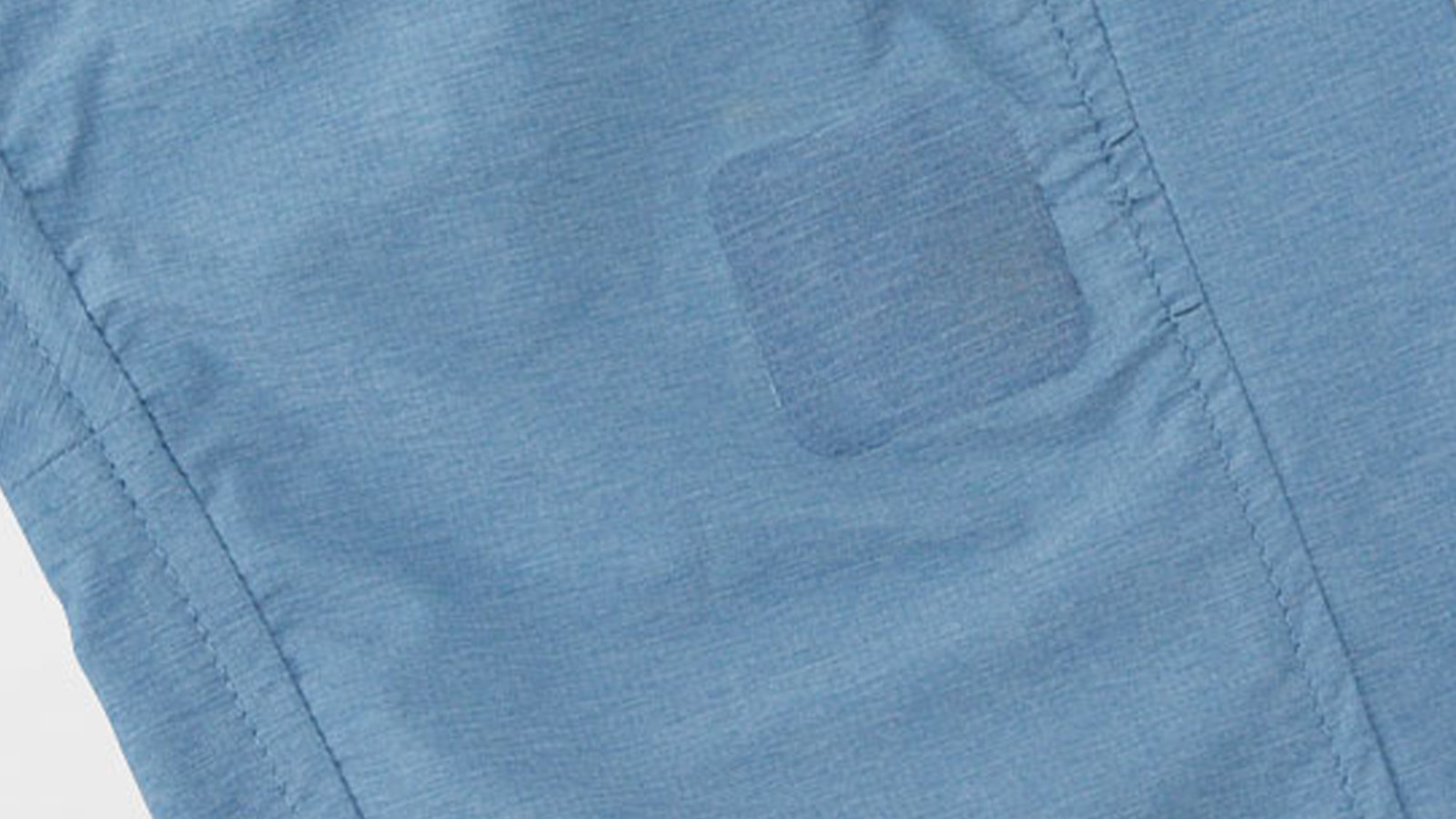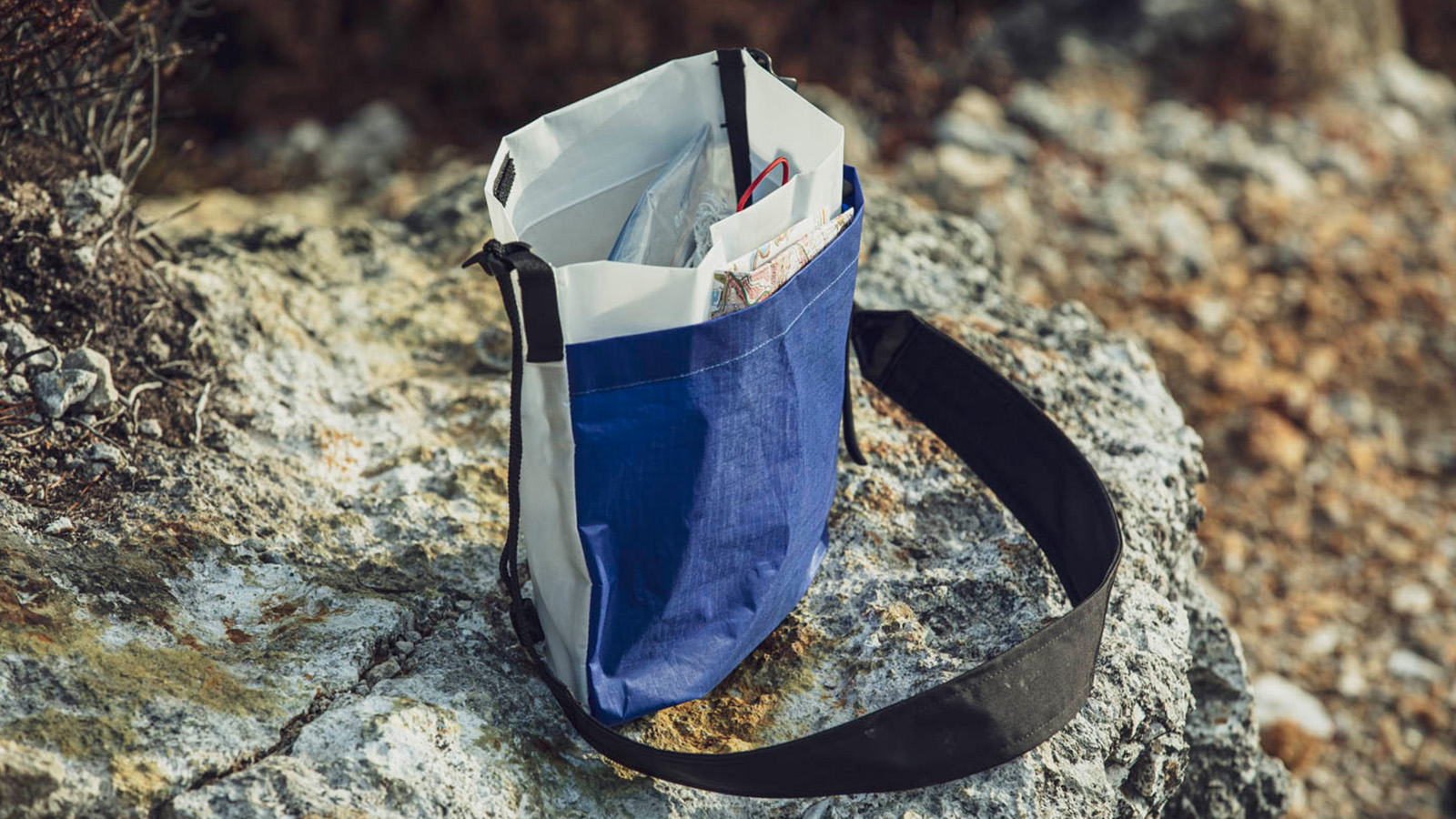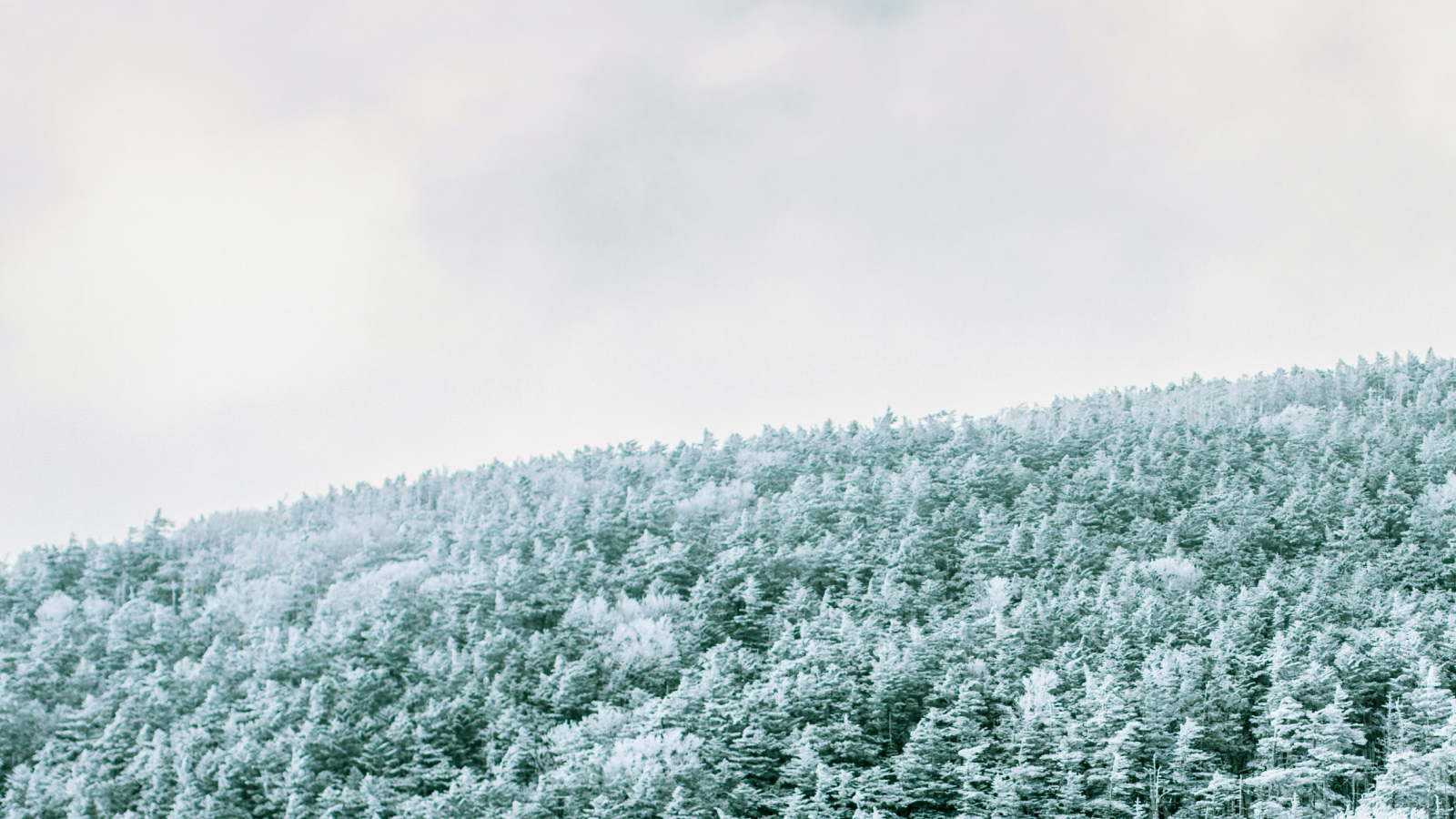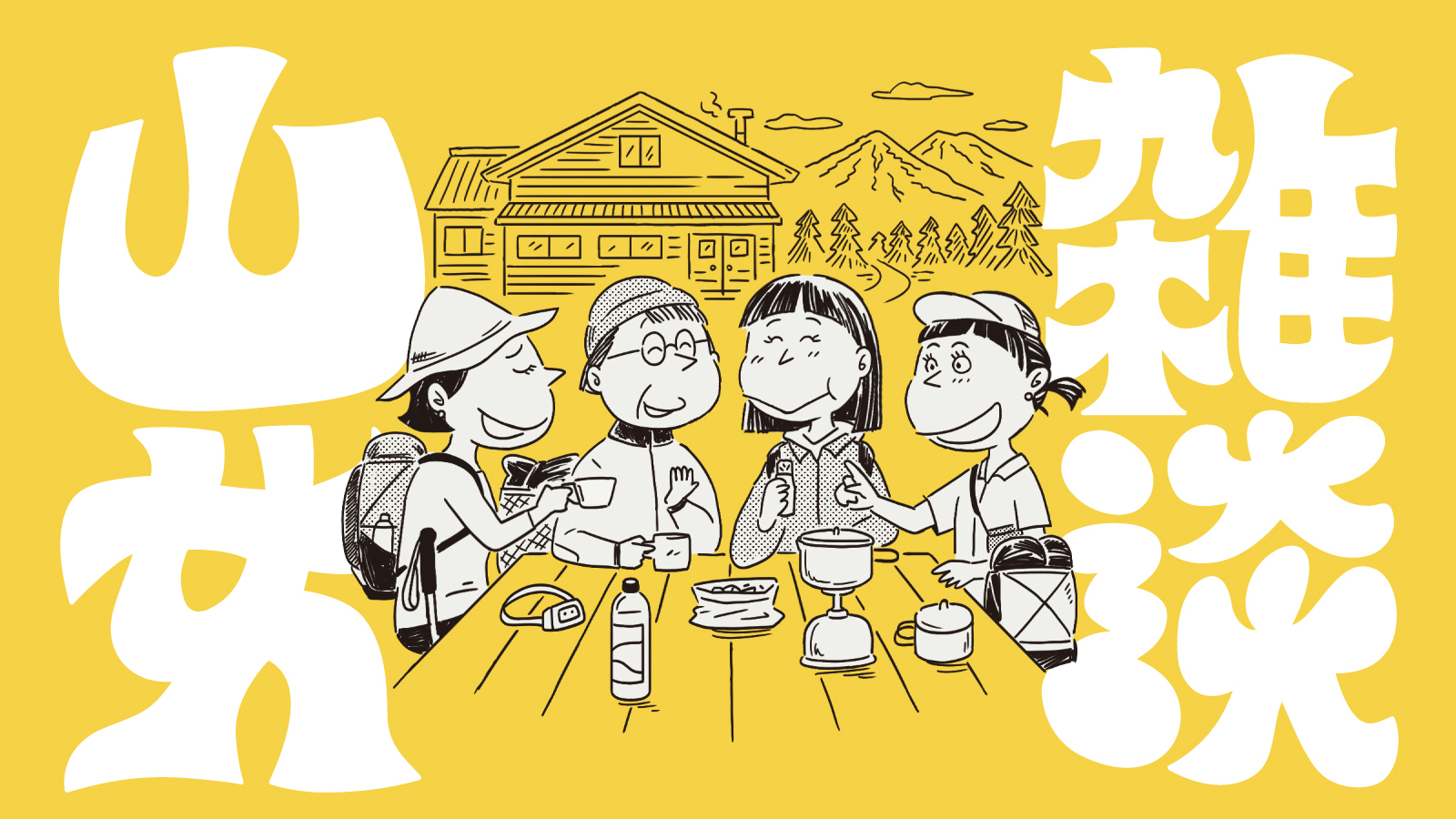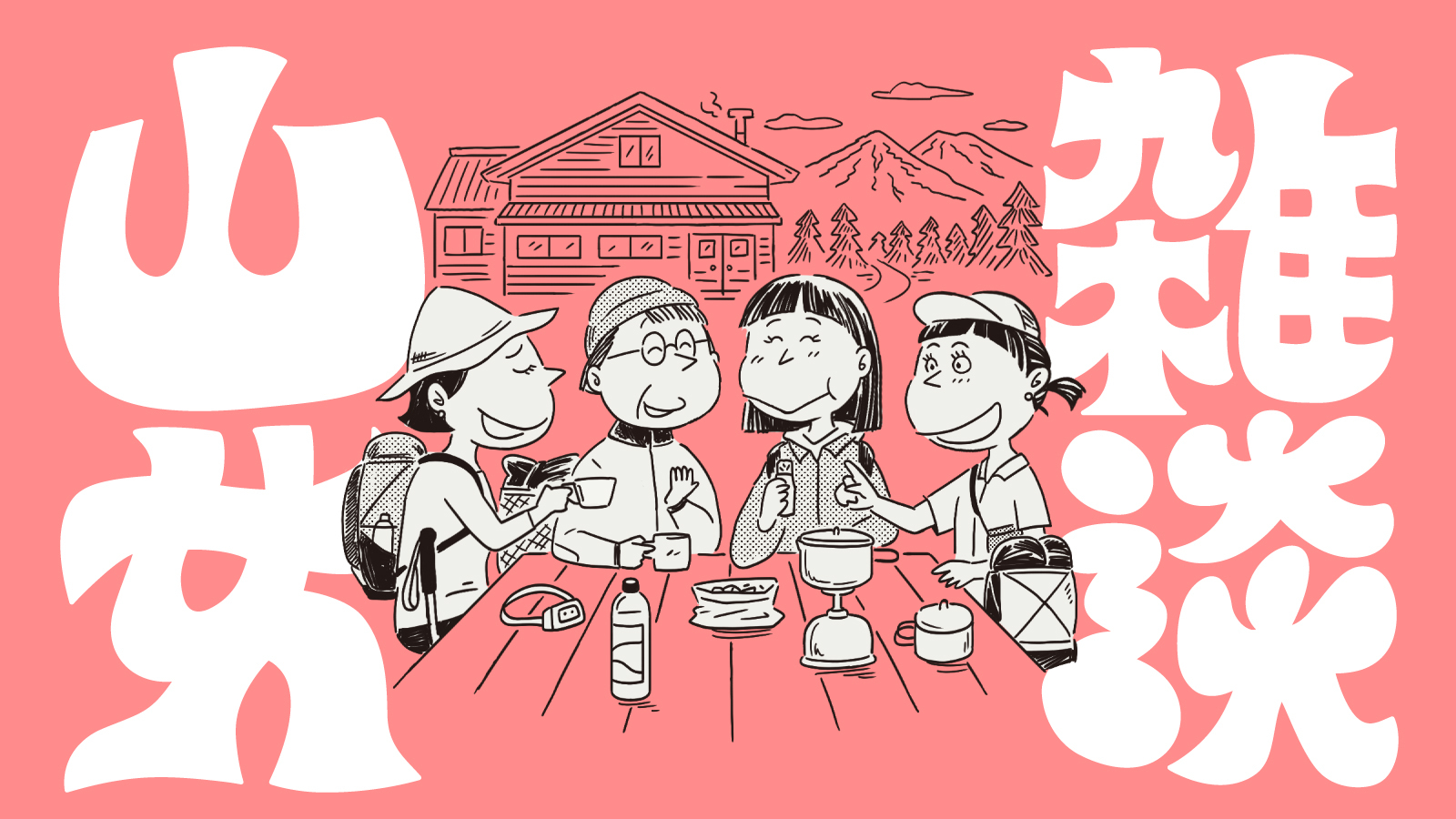#3: Talking About Periods
Photography: Hikaru Otake, Ai Hino
#3: Talking About Periods
Photography: Hikaru Otake, Ai Hino
With ultralight hiking on the rise, it’s easier than ever to find gear advice and trip reports online. But when it comes to women-specific hiking tips, there’s still surprisingly little out there.
That’s why we started the Mountain Woman series — to share honest, practical conversations about topics unique to women in the outdoors, together with our staff and friends at Yamatomichi.
In this third installment, we’re talking about periods — something every woman experiences, yet rarely discussed openly in the context of hiking. We all know how stressful it can be when your cycle happens to overlap with a trip. In this roundtable, our Yamatomichi HLC editor sits down with female staff from our Kamakura and Kyoto stores to talk honestly about pads, underwear, pain management, and the ongoing challenge of being understood.
The Team
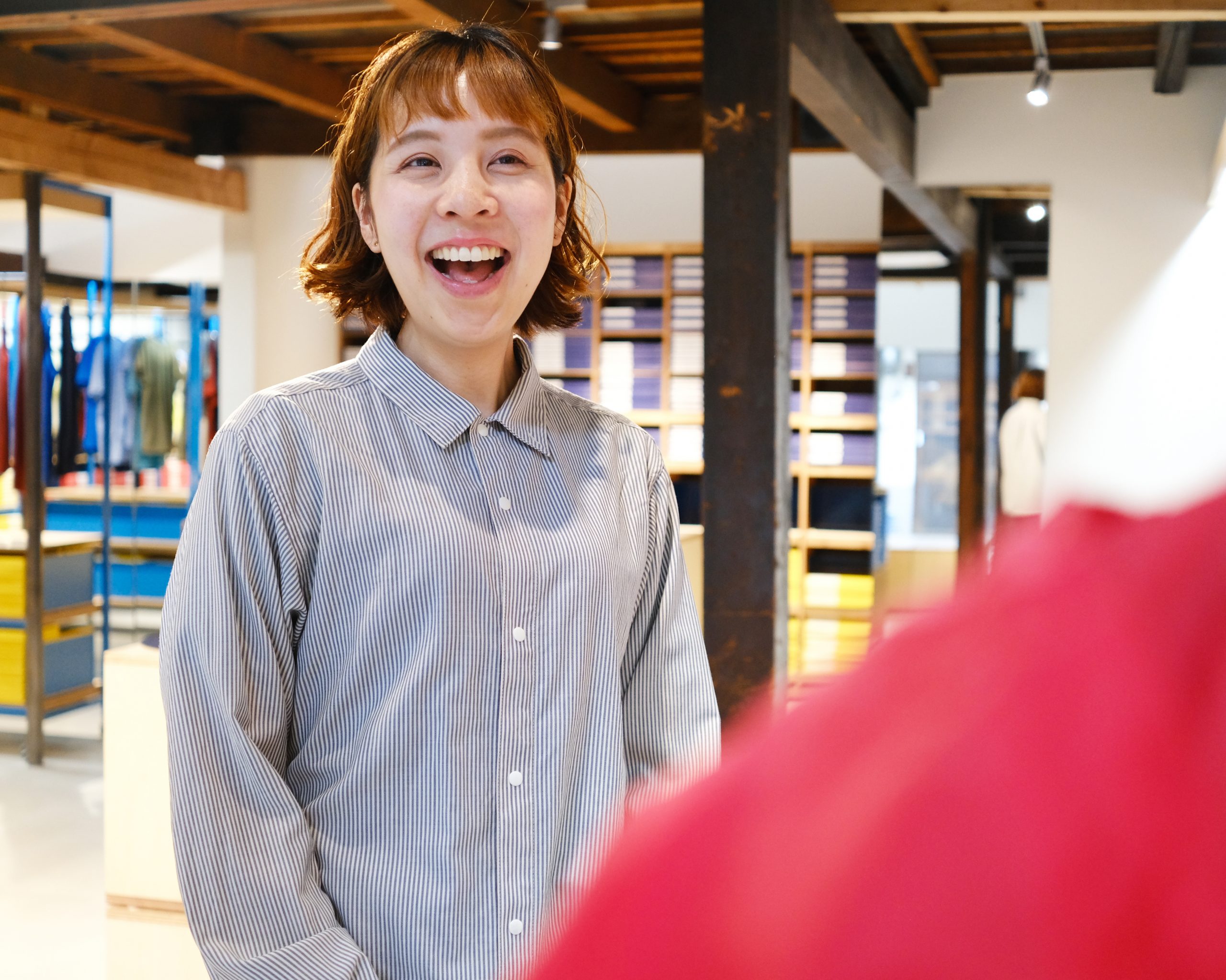
Ayana Nagai, Yamatomichi Kyoto A passionate traveler, Ayana has trekked the John Muir Trail in the U.S., explored Patagonia in Chile, and in 2024, spent 14 days hiking the Walker’s Haute Route from Mont Blanc in France to the Matterhorn in Switzerland. She’s also into marathons, trail running, yoga, and a mostly plant-based lifestyle. Her makeup is always on point—so naturally, we’re curious how she keeps it up in the mountains.
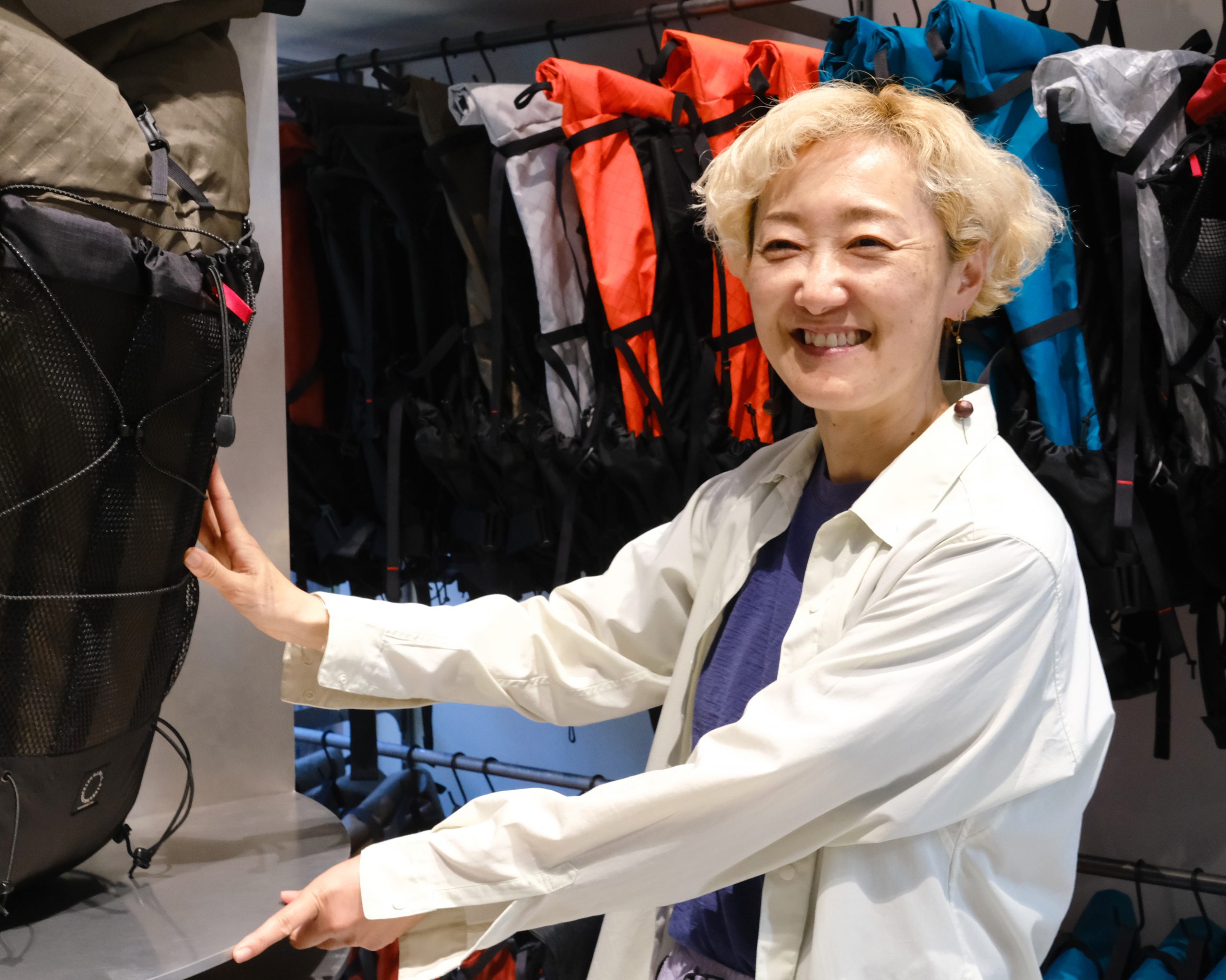
Mayumi Shoji, Yamatomichi Kyoto A born-and-raised Kyoto local, Mayumi traveled through New Zealand in her 20s, worked in cafés, and later joined Yama-shoku-on (山色音), the predecessor to Yamatomichi Kyoto. These days, she mainly hikes in the Kansai region and the Japanese Alps, snowboards in Hokkaido for two months each winter, and practices yoga in her daily life. In spring 2024, she spent 9 days hiking in New Zealand. Her signature blonde hair has been part of her look for over 10 years. She’s especially knowledgeable about care methods and products that focus on recovery.
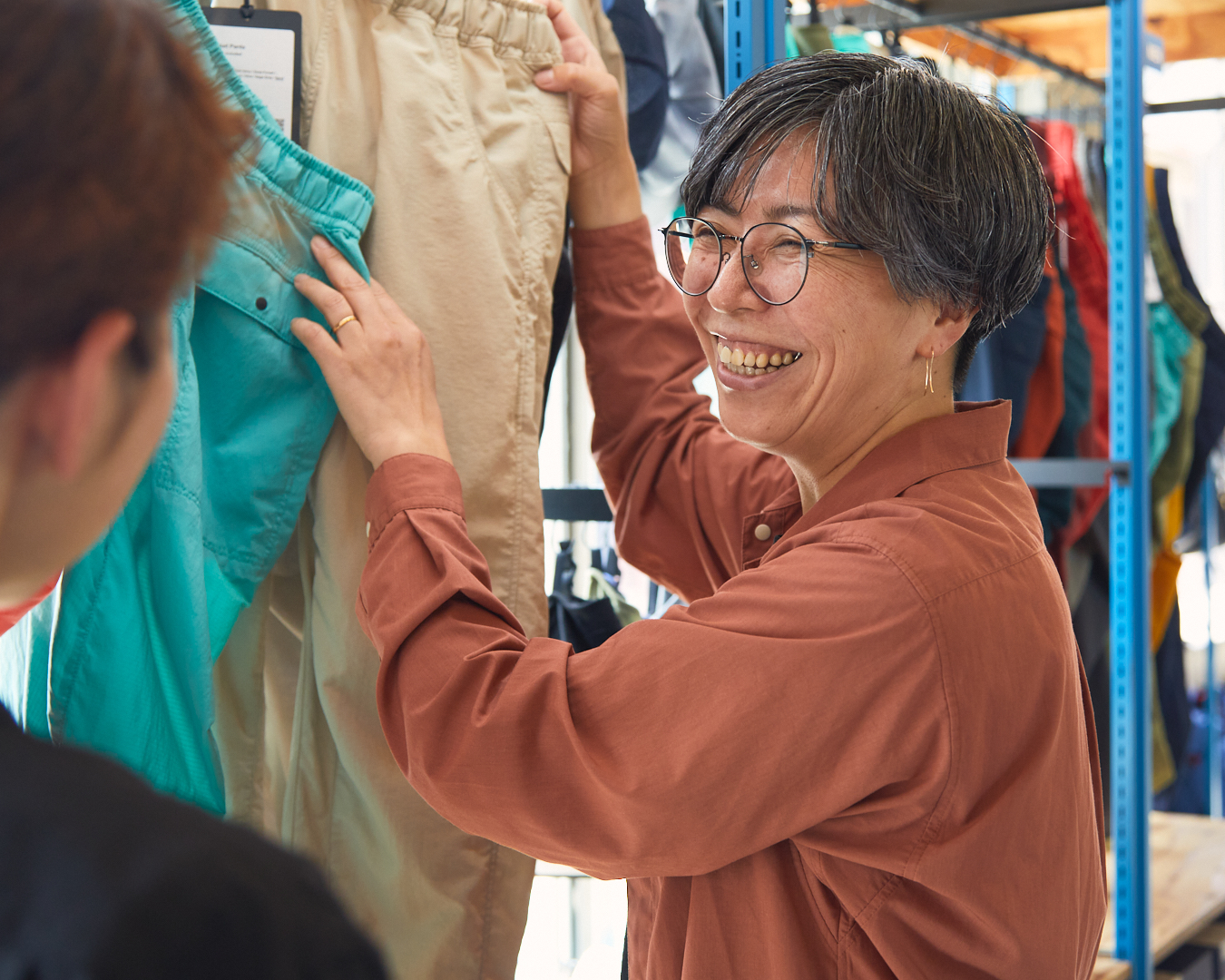
Tsunoda Yuko, Yamatomichi Kamakura After working at a mountain hut in the Japanese Northern Alps and at an outdoor gear shop, Yuko went on to join Yamatomichi. Drawing from her broad experience with a range of products across different brands, she brings practical, real-world insight to this roundtable. While she keeps her makeup and skincare routine as minimal as possible, she’s thoughtful about choosing gear that feels good on the skin and performs well in the mountains.
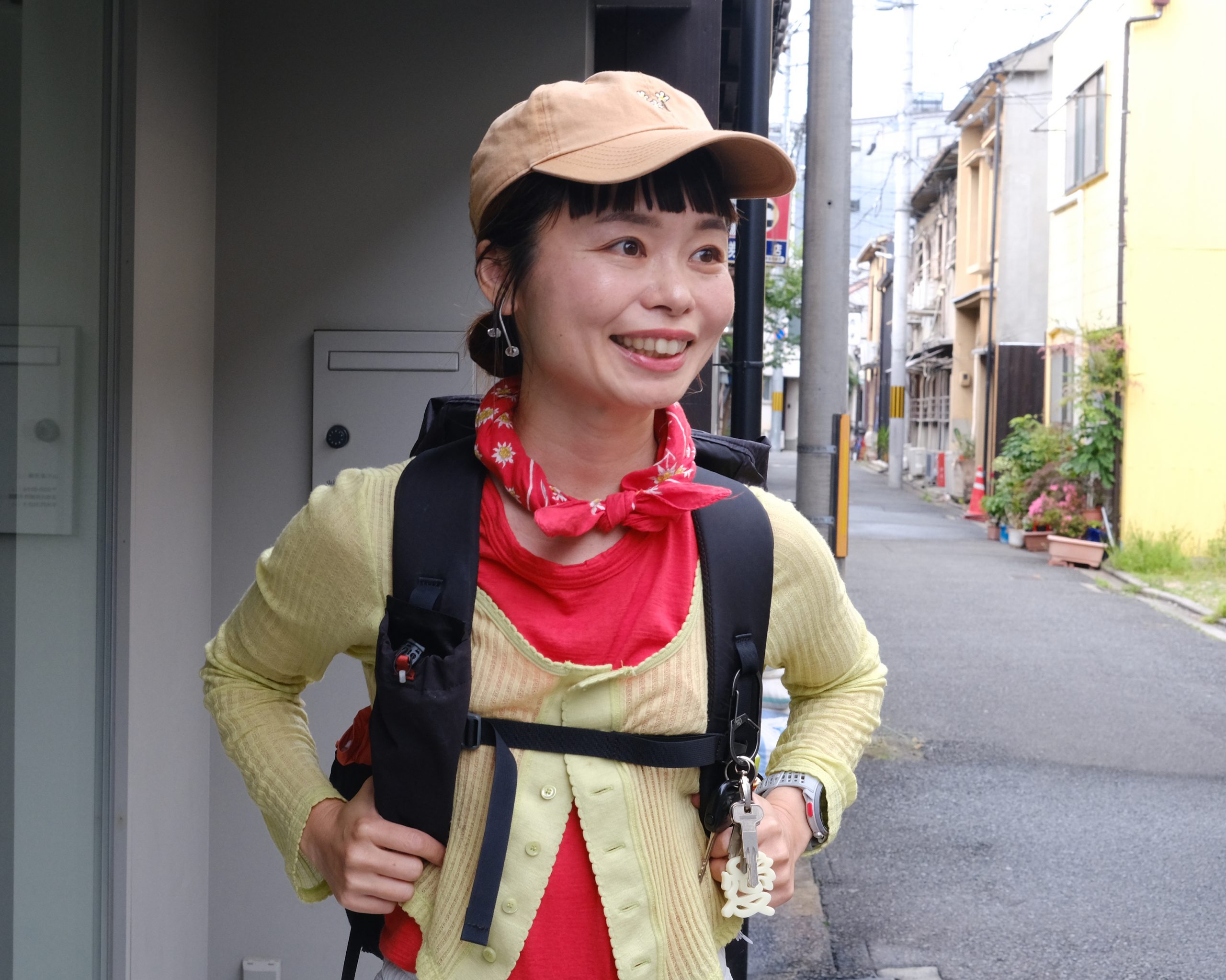
Ai Hino, Yamatomichi HLC Staff A freelance editor and designer, Ai is also the editor-in-chief of YON, an outdoor magazine based in Shikoku. Inspired by her experience organizing Yamamichisai on Mt. Ishizuchi, she joined the HLC team, where she now oversees communications and the JOURNAL. She splits her time between Ehime and Kyoto, gradually applying ultralight principles to both daily life and travel. This roundtable sparked a full refresh of her underwear and gear setup — a total UL reset.
Flow management
Ai: I’d like to start by asking everyone about your experiences with menstruation. For example, is your cycle the typical 28 days? Do you have low mood, abdominal pain, or bloating? I’m sure it’s different for each of you.
Mayumi: I’m in my 40s now and my cycle has become quite irregular, which can be a little unsettling since I never know exactly when my period will begin. My flow has lightened a lot too. I used to carry bulky packs of large pads for overnight use or heavy days, but now I always carry a few compact pads with in my sunscreen pouch.
―So would you say that even if your period happens to overlap with a hiking trip, it’s less of a concern now?
Mayumi: I would say so. I’ve come to a stage where I can get away with small minimal pads. I like the Kao Laurier’s “Shiawase Suhada Ultra Slim.” They’re very compact and gentle on the skin.
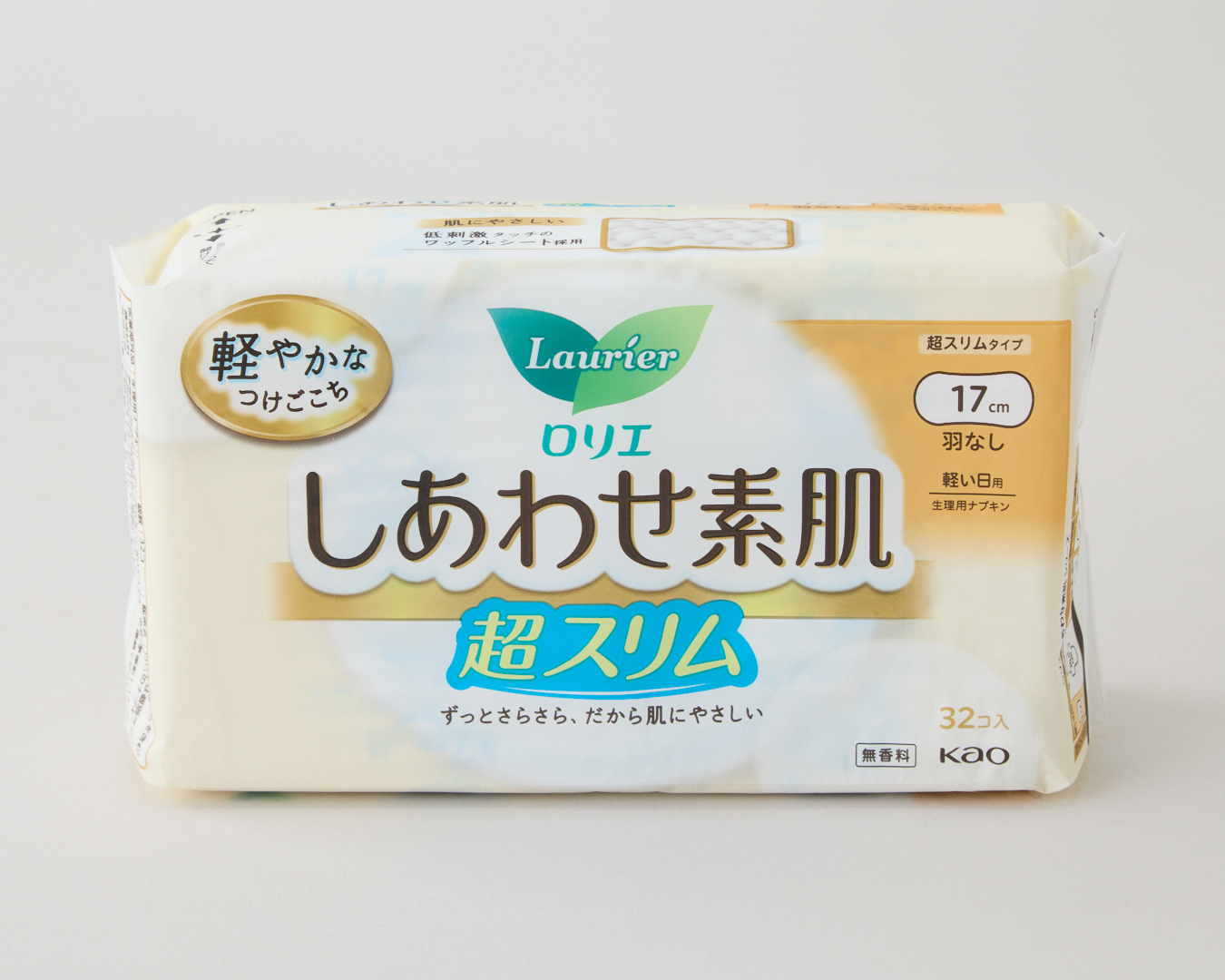
Kao – Laurier Shiawase Suhada Ultra Slim Light Day Use 17cm With Wings
A low-irritation, waffle-textured sheet is used, designed to minimize the surface area that touches the skin, which helps reduce discomfort. In addition, since it’s made of 100% breathable material, it’s less likely to cause stuffiness. Mayumi switches between using the winged and non-winged types.
Yuko: I completely related to what you said, Mayumi. My cycle has shortened to 24–26 days, and my flow has become a lot lighter. I no longer need the thick 30cm pads for heavy days. Now I mainly use Sofy Hadaomoi Organic 100% in 21cm, which is gentle on the skin, paired with Sofy Synchrofit.

Unicharm – Sofy Hadaomoi Organic 100% Daytime Use for Heavy-to-Regular Menstrual Flow with Wings 21cm
The surface material of most disposable pads is made from plastics such as polyethylene or polyester, but this one uses 100% organic cotton for the top layer. It also does not use polymers (superabsorbent materials), which are often added for absorption, showing consideration for reducing skin irritation.
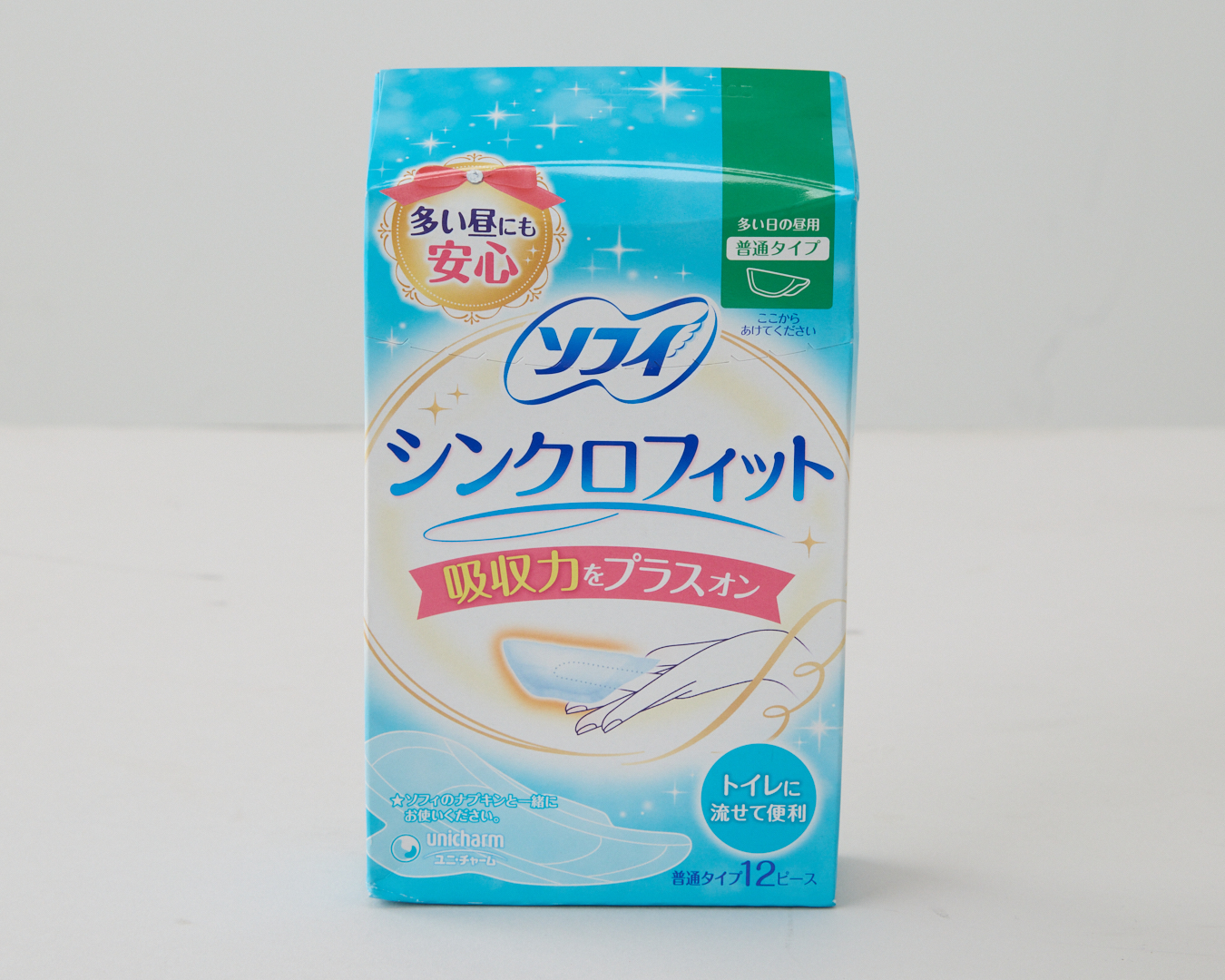
Sofy Synchrofit
Developed to fill the gap between body and pad to prevent leaks, it offers comfortable, easy use. First released in 2005, its recognition has grown over the past five years, along with its popularity.
―What’s Synchrofit?
Yuko: So, Synchrofit is something you use with a pad. You just tuck it between your body and the pad, and it catches the flow directly, adding a bit of extra absorption. That way, you don’t have to change your pad as often.
Mayumi: I’ve never heard of this before, so interesting!
Yuko: It also makes a big difference with that annoying gush when you stand up, and it takes away a lot of the worry about leaks. Plus, it’s small, easy to deal with, and you can even flush it.
Ai: Those soaked-up pads or tampons can get pretty bulky.
Yuko: Totally. That’s why I like this — you don’t have to pack out all that extra bulk. Since it helps your pad last longer, you end up with way less waste overall. I only discovered it last year, but it’s actually been around for a lot longer.
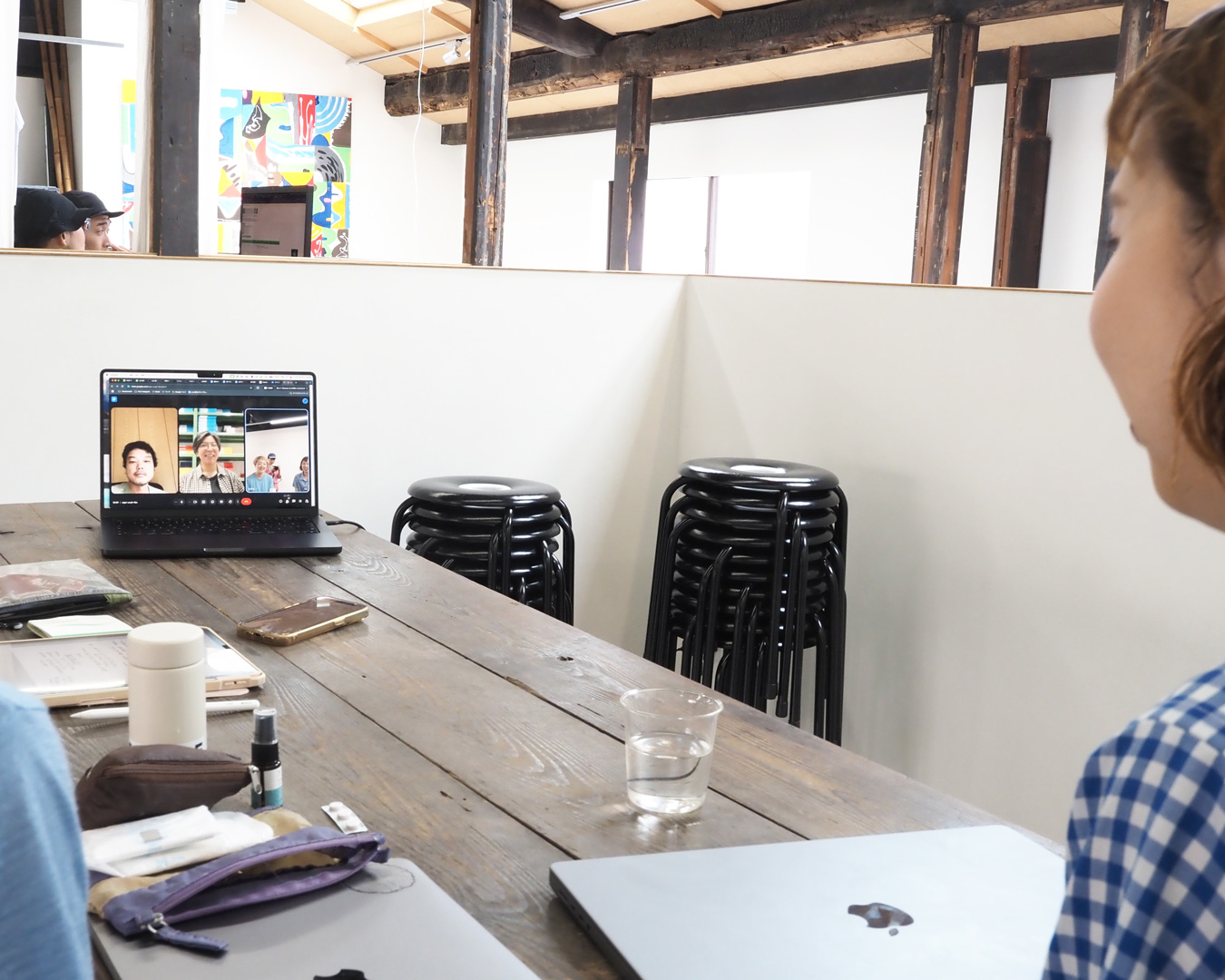
The interview connected Kamakura and Kyoto via Zoom, with Yamatomichi JOURNAL editor-in-chief Masaaki, joining as the male representative.
―Amazing tips from both of you. So, Ayana, how about you as someone in your 20s?
Ayana: Basically, I usually go with winged pads. If my period starts right at the beginning of a hiking trip, I’ll just put on a large overnight pad and keep it on for hours while hiking.
Yuko: Personally, I don’t really like the winged pads since I wear boxers when I hike. They only fit well with regular panties.
Mayumi: That sounds like it can get a bit uncomfortable at times no?
Ayana: Yeah, it can. Sometimes the wings have even chafed and hurt, which I really disliked. But with smaller pads, if they soak up too much sweat, I worry they’ll get heavy and peel off… So I haven’t really found the perfect solution yet. For now, I usually carry one or two thin daytime pads like Mayumi mentioned, along with some overnight-level big ones. My go-to light pad is the Laurier Slim Guard from Kao.
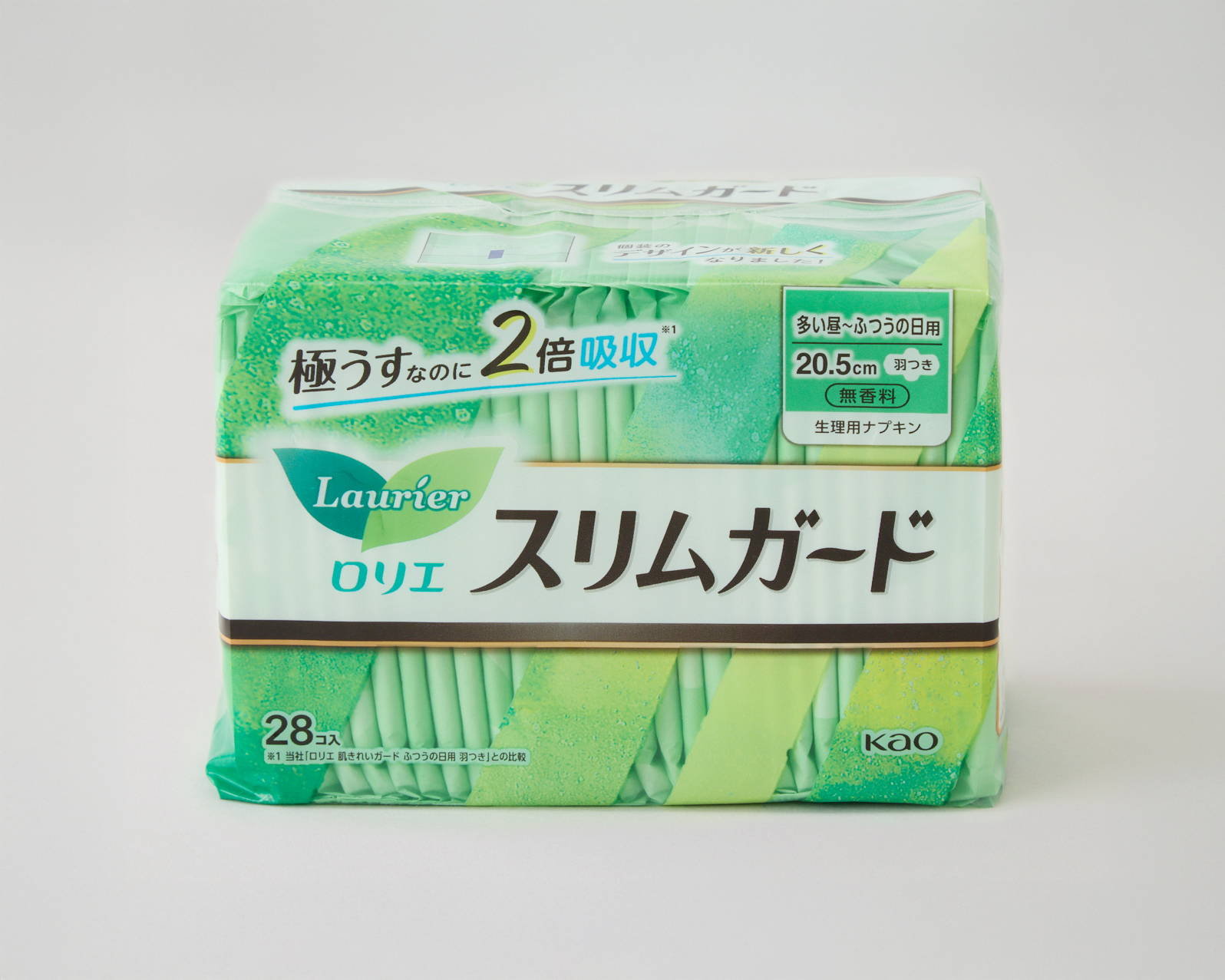
Kao – Laurier Slim Guard
With about half the thickness of a regular pad, it achieves “ultra-thin yet instant absorption.” It also comes in a wide lineup, including daytime, nighttime, winged, and non-winged types.
―What about when you’re overseas or on a long trail?
Ayana: When my period overlaps with a long trail, I have to bring about a week’s worth of pads, and that takes up a lot of space. You won’t see them listed on my gear list or in photos, but honestly they’re super bulky. Even when I go abroad, I prefer to bring everything from Japan since the quality of Japanese pads is so good.
―Wow, so many great recommendations. I’d like to introduce menstrual cups. I’ve been using a for about seven years now.
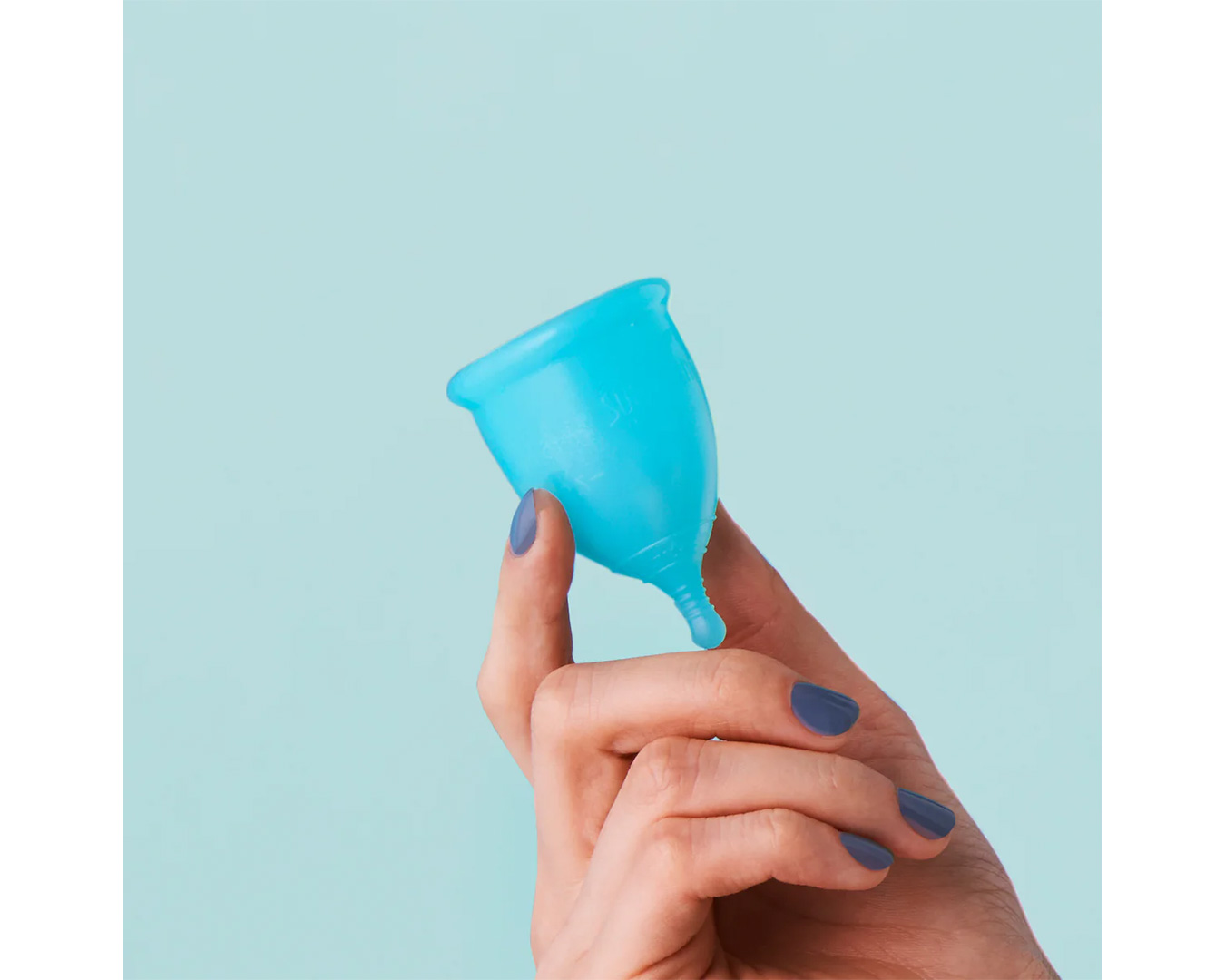
Menstrual cup – Super Jennie
Made from 100% medical-grade silicone, it can be worn safely for up to 12 hours. Ai uses the Super Jennie, known for its large capacity and global popularity. Sales in Japan have been suspended this year, but options from other brands continue to grow.
Yuko: Oh, how is it?
Ai: I started using it because my periods were heavy and I was tired of changing pads all the time. You just pop the cup in, empty it when you need to, and that’s it. No waste, less hassle, and way more comfortable. It might feel strange at first, but once you get used to it, it’s super easy.
Yuko: How many hours can you keep it in?
Ai: You can wear it for up to 12 hours. And if a little blood does sneak out, a thin pad is usually enough.
Ayana: That sounds really good.
Yuko: There are also disposable cups, right? I’ve been curious. I do worry about hygiene when hiking for several days. How do you maintain it?
Ai: I haven’t tried it on multi-day hikes yet, but in those situations it’s best to wipe it with non-alcohol wet wipes, rinse with purified water, and wash with a mild soap when you can. Before and after each cycle, I sterilize it by boiling.
Ayana I always worry about staining my underwear with blood, so I usually avoid merino wool underwear. Right now, I just use regular sanitary shorts that aren’t really made for hiking. I also stick to darker-colored underwear.
Mayumi: I actually prefer natural fabrics for underwear or pants because I like how they feel against the skin. The stiff synthetic material in sanitary shorts can get a bit stuffy. And if they do get stained, there are detergents that work really well for getting blood out.
Ayana Oh, I see—maybe I’ll give those detergents a try. I do wonder, though, if there are any really good shorts out there.
-Types of underwear—that’s a great topic. Yuko, you recently went on a hike with a new kind of underwear, right?
Underwear
Yuko: Yeah! A coworker recently recommended the Millet Absorbent Shorts to me.
Ayana Wow, how was it!? I’ve been so curious!
Ai: I’ve been seeing them everywhere lately. The underwear itself absorbs, so you really don’t need pads at all?
Yuko: That’s right. I used Millet’s absorbent underwear on a 3-day, 2-night hike in the Japan Northern Alps. My period started on the second day, so it turned out to be a great experiment (laughs). It actually worked pretty well!
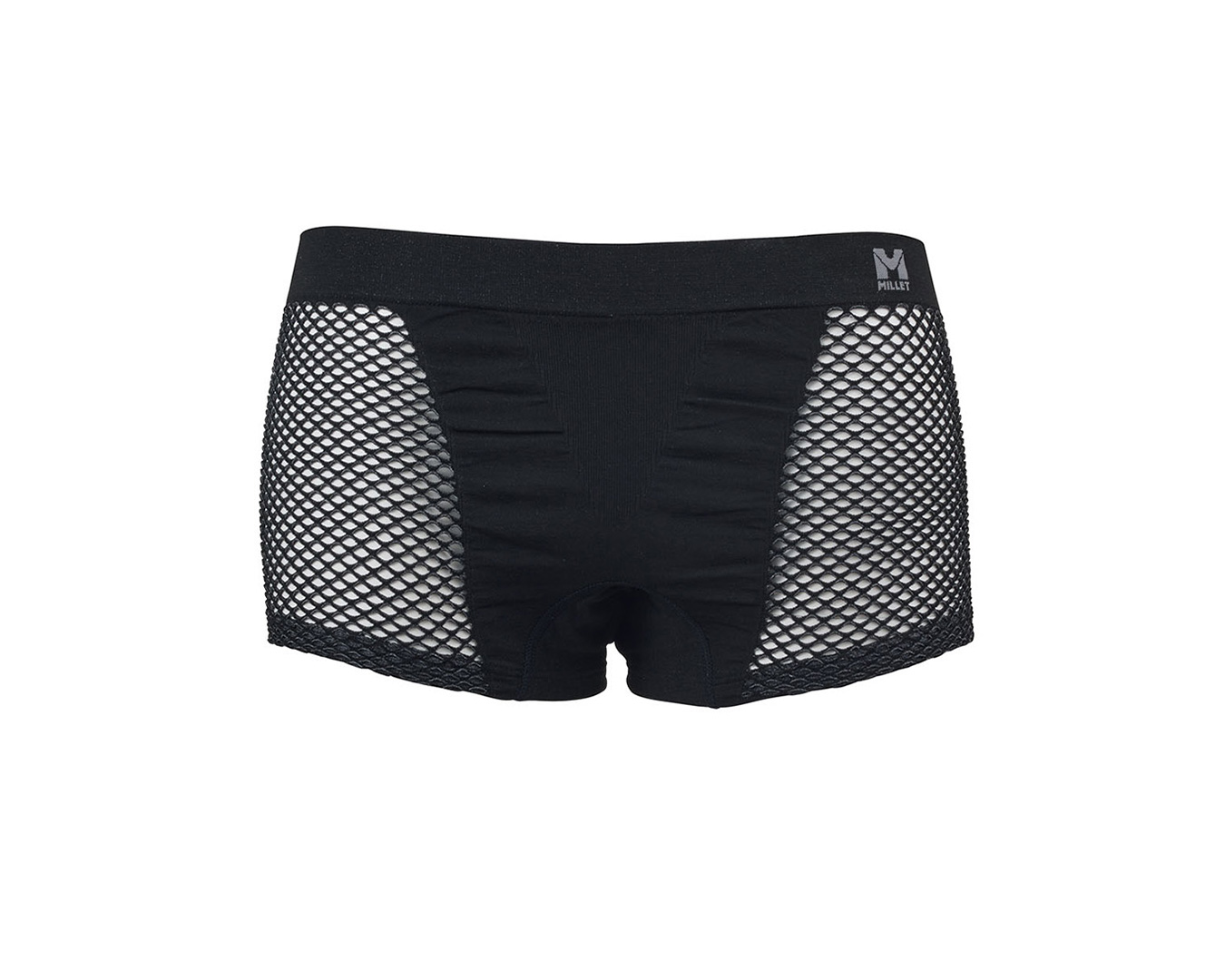
The material is 66% polypropylene, 28% nylon, and 6% polyurethane. Based on Drynamic Mesh fabric, which clings to the skin to quickly wick away sweat, these absorbent shorts combine high absorbency with leak prevention to provide lasting comfort—making them well-suited for outdoor use.
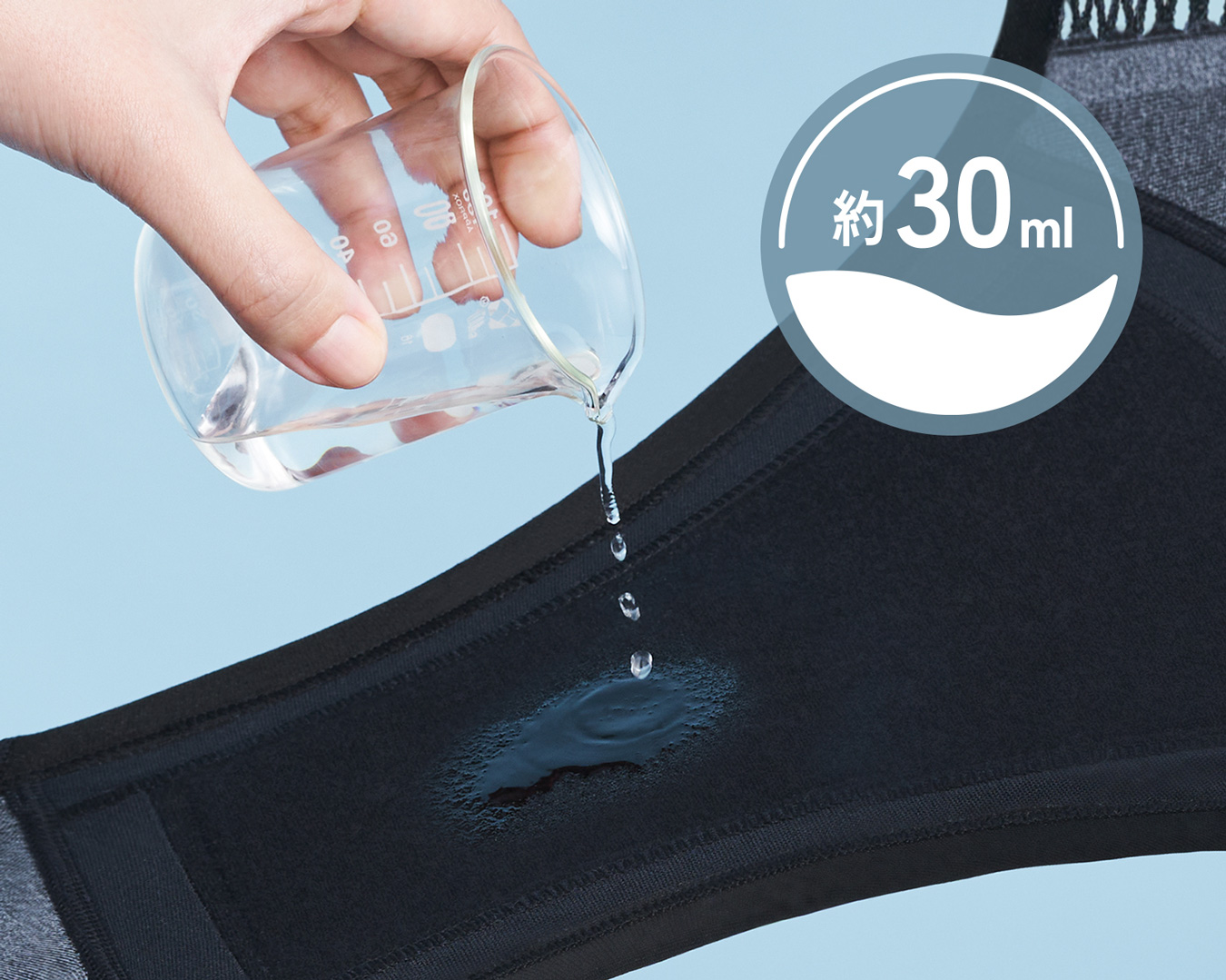
With an absorption capacity of 30ml, the four-layer absorbent surface is treated with antibacterial and deodorizing processing to prevent leaks, maintain a comfortable feel against the skin, and reduce discomfort.
Was it good enough to replace pads?
Yuko: For me, yes, it actually was. My flow is on the lighter side, but it was super hot that day and I was sweating buckets. The shorts absorbed both sweat and menstrual blood really well, and the surface against my skin stayed mostly dry, which surprised me. Since they absorb so quickly, I didn’t have to worry about leaks. And honestly, not having to deal with a pad shifting out of place made it feel really stress-free.
Ayana: That sounds amazing. And when you think your period’s about to start but it doesn’t, it feels wasteful to toss a pad you wore just in case. Did you run into any downsides?
Mayumi: Since it’s synthetic, I’m curious about how it feels against the skin and how comfortable it is to wear.
Yuko: One thing I noticed is that the outer layer held onto sweat, so my shorts stayed damp for a while, though they did dry by night. By the end of the third day, there was a bit of odor. So I think they work best for when your period’s just about to start—so you don’t waste a pad—or for a short hike at the lighter end of your cycle.
―Thanks for the honest review!
Little remedies, big relief
―Another big part of being on your period is handling pain. How do you all manage cramps or low energy on the trail?
Ayana: I do get some cramping the day before and on the first day, so I always carry painkillers with me. Just over-the-counter Loxoprofen.
Yuko: I always bring it too.
Mayumi: Same here—I keep it with me just in case. It’s also useful for headaches or other pains, not just periods. I cut it down and carry like three pills for three days.
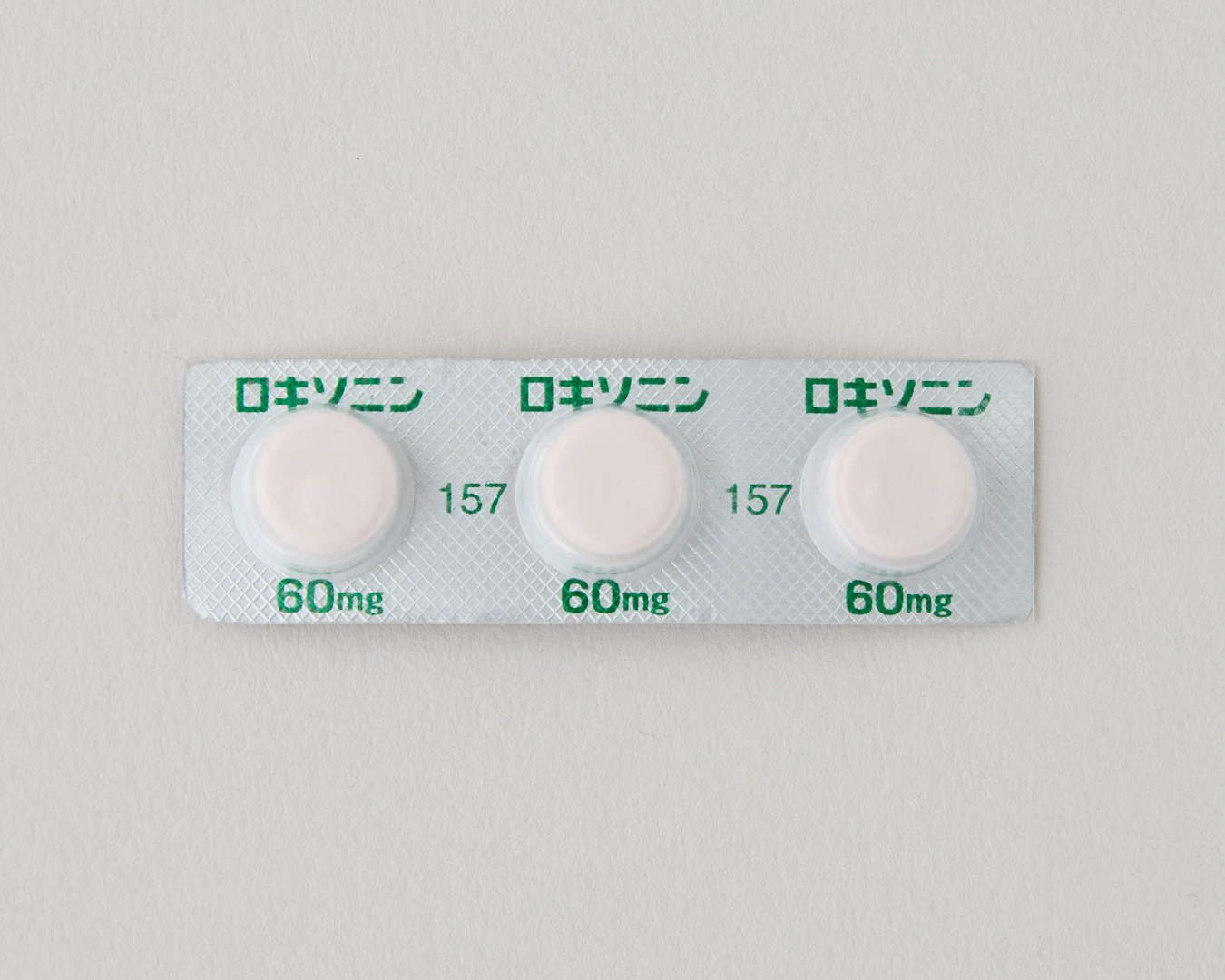
Daiichi Sankyo Healthcare – Loxonin
A pain reliever known for its quick action and strong effectiveness. The prescription version “Loxonin Tablets” was first released in 1986, and the over-the-counter (switch OTC) “Loxonin S” became available in 2011. Some women also use “Loxonin S Premium Fine,” which is designed specifically for menstrual pain.
―Mayumi, how long does one pill work for you?
Mayumi: For the kind of cramps I get, one pill usually lasts me about a full day.
Ayana: For me, when I get stomach cramps I can’t function normally—it makes walking really tough. So on heavy days I sometimes take it two a day.
―And Yuko, do you get stomach cramps too?
Yuko: I used to get really bad cramps, but I think that was mostly from stress and being unhealthy in general. These days the cramps are basically gone, and I hardly ever need painkillers. At most, I’ll take one on the first day. But now, on the first day of my period, it’s my lower back and hips that really hurt.
Sometimes it gets so bad I can barely move my legs forward. Even though my flow has decreased a lot, the back pain makes it tough when a hiking.
Ayana: Yeah, yeah, I know exactly how that feels.
―The type of pain, how severe it is, and how much medicine you need really varies for each of us. As for me, I’ve been taking a low-dose birth control pill for about five years now to manage my cycle and reduce menstrual flow.
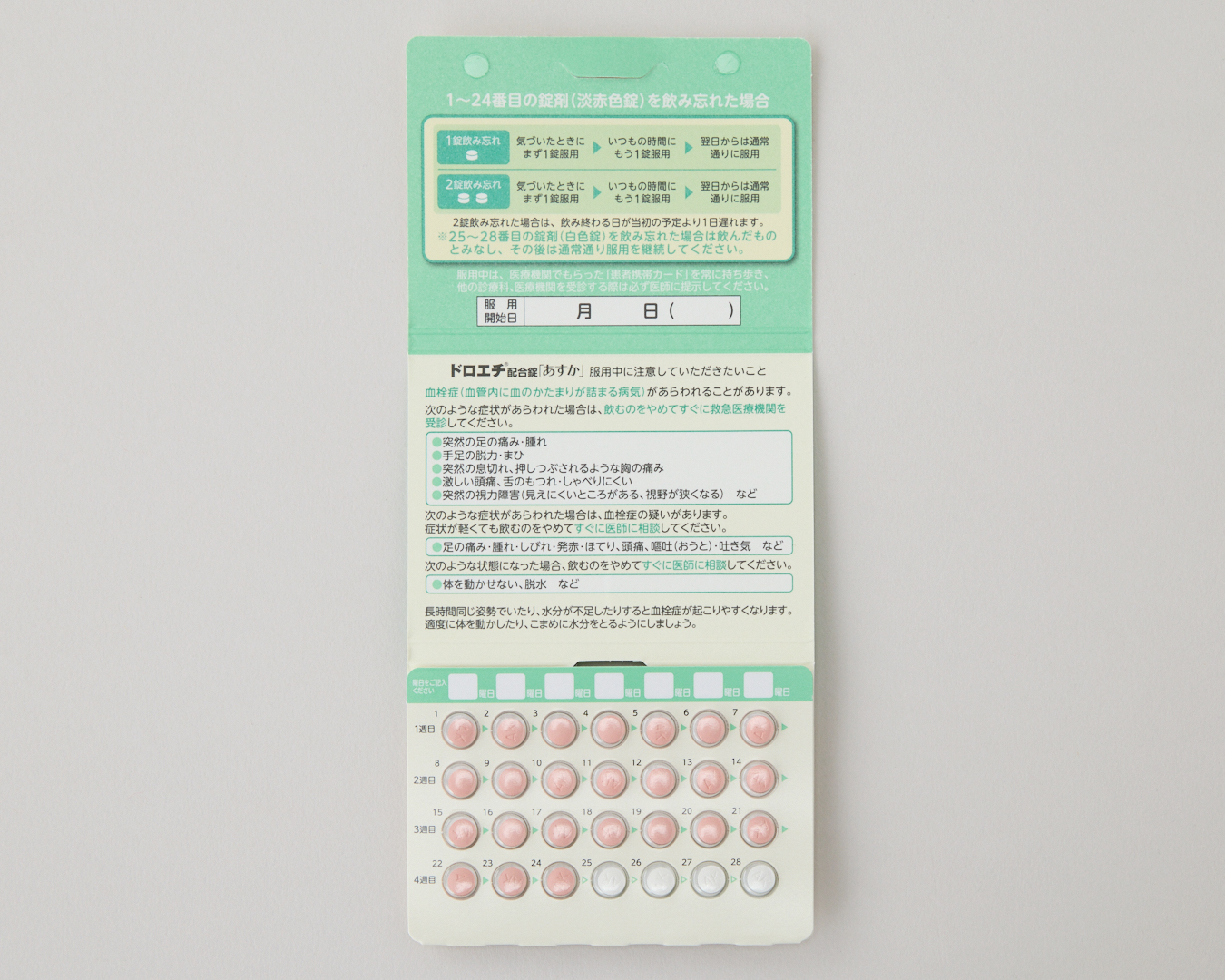
ASKA – DroEthi Combination Tablets
A 28-day sheet, with one pill to be taken at the same time each day. It reduces pain at menses by suppressing production of prostaglandin which causes pain through
inhibition of ovulation and preventing the endometrium from thickening. A prescription from a gynecologist is required.
Mayumi: I’ve never used contraception. Does your period stop or shift around?
Ai: Sort of. There are different kinds of pills, but with this one, the pink tablets contain the active female hormones, and while you’re taking those, your period doesn’t come. If you keep taking them continuously, you won’t have your period, but there are regular break periods for maintenance. You always know exactly when your period will arrive.
Ayana: That sounds great. I’ve also heard that people with irregular cycles use them to regulate timing, and that you can sometimes shift the break period after consulting with a doctor.
Ai: A lot of people only see the pill as contraception, but I wish it were more widely known that it also helps stabilize your cycle and improve period troubles.
Yuko: Not exactly medicine, but I always bring a multimineral supplement. It’s got iron and zinc, both key minerals with periods. There was a time I felt dizzy and a bit anemic, so I take it to reduce that.
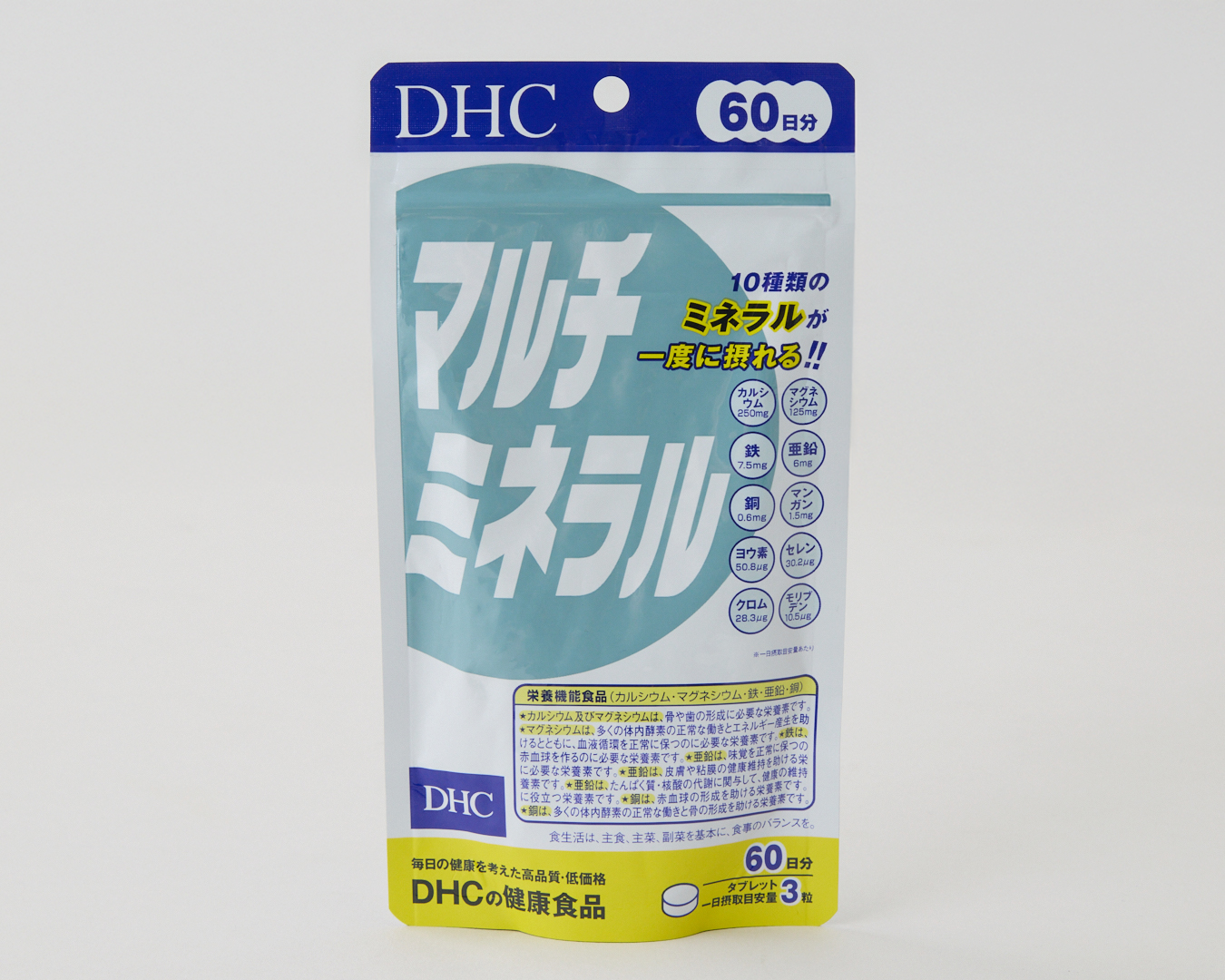
DHC – Multimineral
A supplement that helps replenish minerals—often lacking but essential for maintaining and regulating body functions. A key point is that it’s easily available at drugstores.
Mayumi: It isn’t really an issue for me, but I know a lot of women struggle with mood changes and relaxation. I always bring a spray like this to help with that. This aroma mist is perfect for those moments. I picked it up at the Hiker’s Gear Party in Kyoto — it’s from a brand a friend of mine runs.
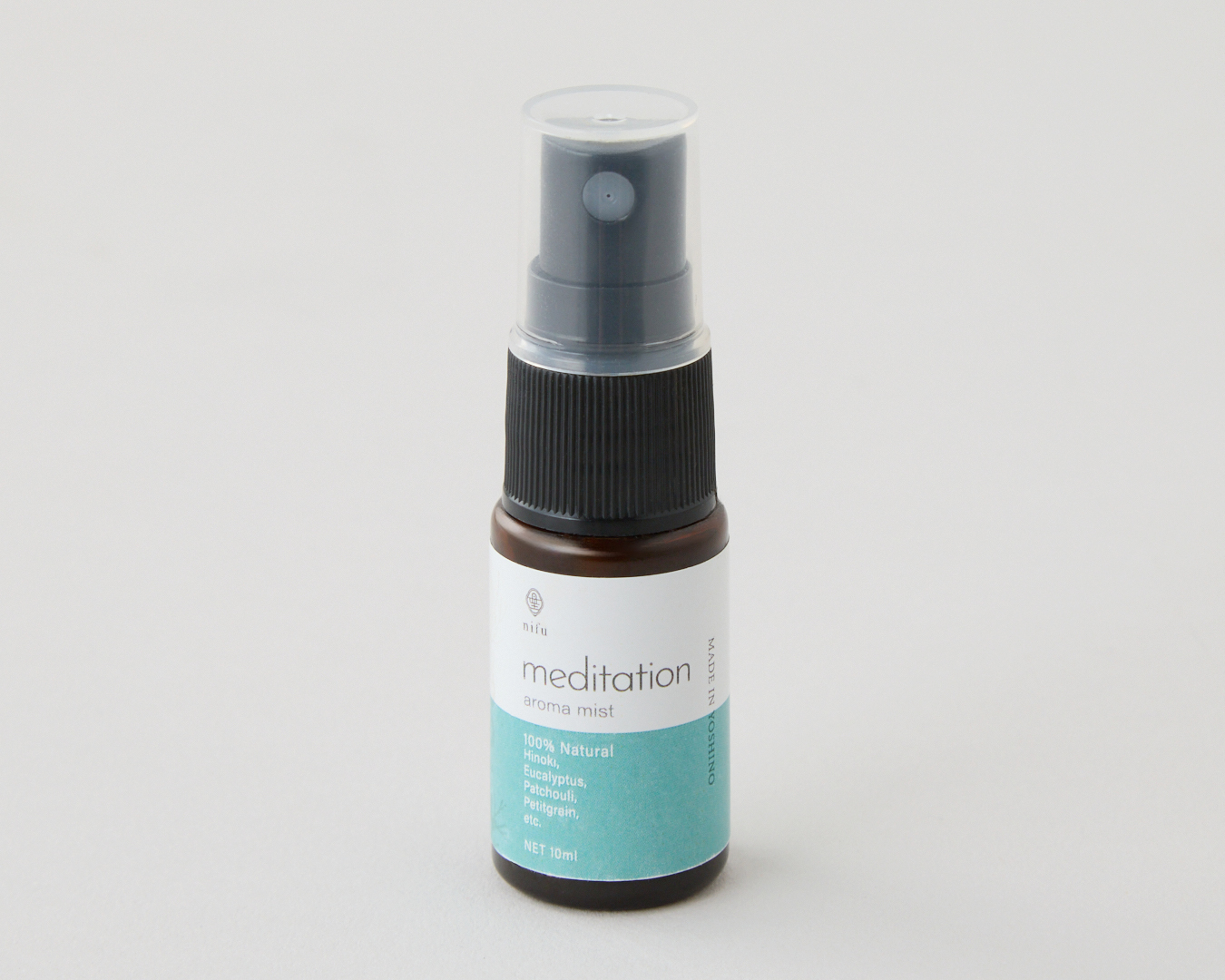
Nifu Natural Essential Oil Aroma Mist meditation
A beauty and healthcare brand focused on “warmth and fermentation,” originating from a bath salon that uses only the natural fermentation heat of hinoki cypress. In addition to essential oil from Nara Yoshino hinoki, the “meditation” blend also contains eucalyptus, patchouli, and more.
Mayumi: It’s small and smells so good—just one spray inside the tent and it feels great. It also helps with sweat odor. Sometimes I’ll use either this or the paper incense.
Ai: I want one! The care items you recommend are always spot on.
—Any other things that give you trouble during your period? Even the small stuff.
Yuko: Not being able to get into the hot spring bath! That’s definitely a common issue.
Mayumi: Awful! Exactly when you want to soak and warm up, right? (laughs)
Ayana: A hot spring after a hike is such a classic routine, it’s tricky.
Ai: Yeah, it does feel a bit sad. During your period you’re more vulnerable, and people say there’s an increased risk of infection, so of course there are hygiene and etiquette reasons too—but still, you just want to soak in the bath.
The struggle to be understood
―We’ve talked pretty openly about our periods, maybe too openly for print (laughs). What would you like to say to the men?
Yuko: Periods are often seen as only a women’s issue. I’m not asking for special treatment, but I do wish people understood what we’re going through. These days I just say it as it is. If my stomach hurts at work or during a hike, I speak up and let people know I’m on my period. It can be hard for younger women to do the same, so I think it’s important not to treat it as something secret or off-limits.
Ayana: There’ve definitely been times when I couldn’t bring myself to say that I was on my period or just admit that I wasn’t at 100%.
Yuko: Yeah, it’s not easy to say. I don’t think I could have said it either when I was in my late 20s like you.
Ayana: Last year, when all the Kyoto store staff went to the Japan Alps together, my period hit right in the middle of the trip. The timing couldn’t have been worse — I was doubled over with cramps and could only walk at half my usual pace. I didn’t tell anyone except Mayumi and the other woman on the team.
―What would have been the ideal environment for you when that happened?
Ayana: That day, I just couldn’t tell the male staff what was really going on. It felt like there was an invisible wall. But looking back, I realized it’s not that I wanted special treatment — I just wanted to feel safe saying how I felt.
Men can really help by creating that kind of openness. It doesn’t take much — even just asking, “Are you doing okay today?” makes a huge difference. And if someone says, “Yeah, I’m on my period,” it helps so much when you respond naturally, like, “Ah, I see. Then take it easy today,” or “Come in at your own pace.”
It’s those small, simple moments of understanding that make the biggest impact. That kind of warmth shouldn’t be special — it should just be part of how we treat each other every day.
Mayumi: Just having someone understand the situation makes a world of difference.
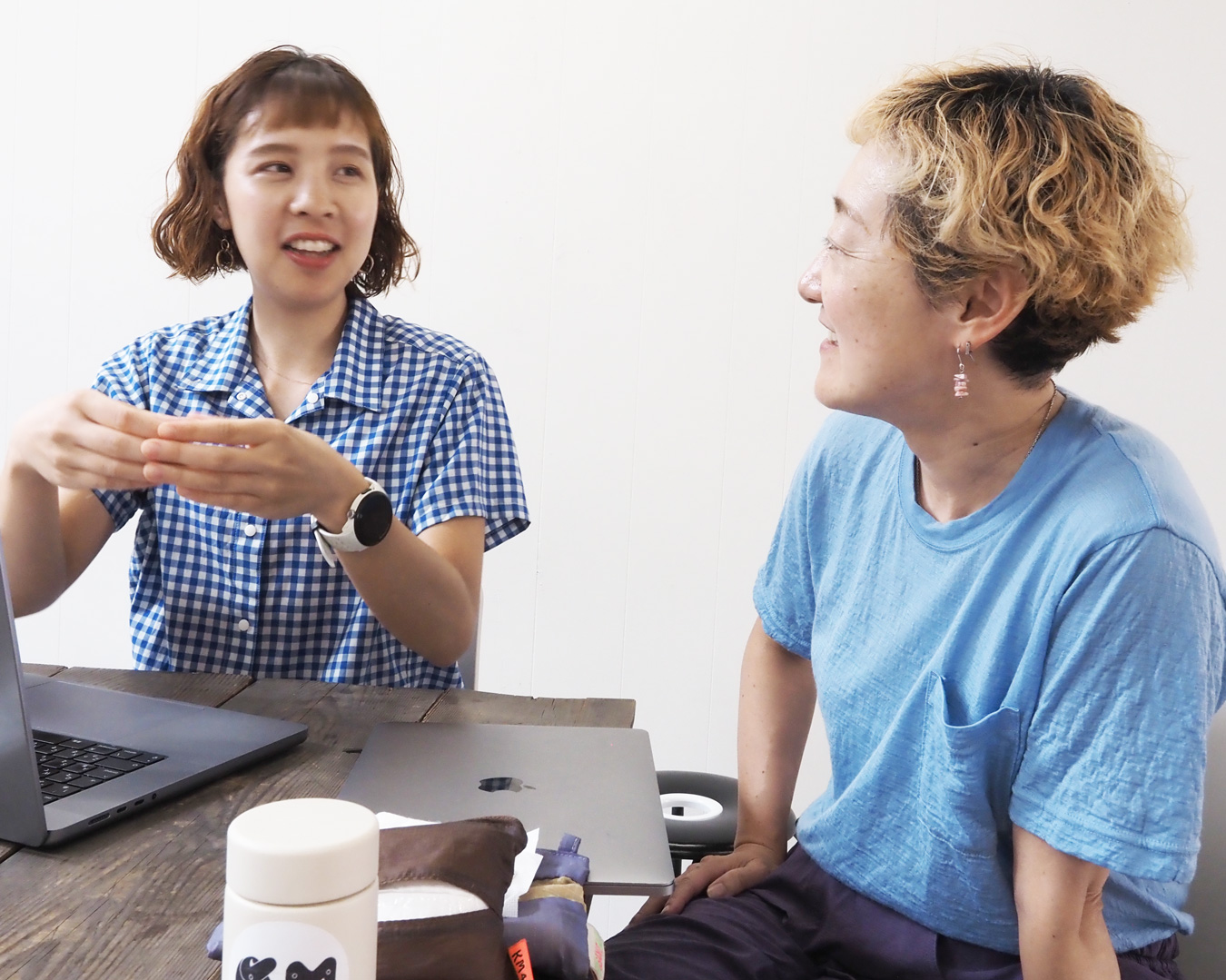
Ayana (left) and Sho-chan (right) from Yamatomichi Kyoto. Simply having the chance to share experiences and feelings that they hadn’t been able to talk about before brought an unexpected sense of relief. The male staff who were listening may have looked a little uncomfortable—but perhaps that just shows how much room there still is to understand one another better.
Yuko: Of course, I can’t exactly stand up in front of a big group and say, “I’m on my period!” But at Yamatomichi Kamakura, there’s an atmosphere where I can talk about it pretty openly. Our store manager, Maehara, used to work in healthcare, so I always felt like he wouldn’t be bothered by that kind of topic. One day, I just decided to say something directly, and he responded completely normally — that’s how it started.
Another time, I skipped our weekly shop run club because I had bad cramps. A male staff member asked, “What’s up?” and when I told him, “My period’s giving me back pain,” he just said, “Ah, take it easy.”
I hope women don’t feel like they have to overthink it or hold back. It’s just a normal part of life, and there’s nothing strange or shameful about saying how you feel. When we treat it naturally, others usually do too — and that’s how understanding starts to grow.
Ai: It’d be nice if no one had to hold in the pain or stay silent. Really, saying “I’m on my period today” should be as simple as saying “I’ve got a cold.” It’s basically just a condition of the body.
Mayumi: Exactly. Regardless of gender, understanding each other’s physical conditions is really important.
Yuko: And if someone says they’re on their period, there’s no need to make a big deal out of it. Just telling them not to push themselves or to let you know if it gets tough is more than enough. Even just acknowledging that it sounds rough can make a huge difference.
Ayana: Keeping it simple is best. Even a “Do you need the toilet?” check-in makes me happy. During your period you have to use the restroom more often to change pads, so instead of, “Another bathroom break? You’re going a lot,” it feels kinder if people think, “Ah, that’s just how it is today.”
Mayumi: Even bathroom logistics are different, right? Men can often just go nearby, but when toilets aren’t nearby, it can be a real scare. I always check toilet locations on the map ahead of time.
Yuko: I also think carefully about how I drink water so I don’t have to go unnecessarily often.
Ayana: I’ve never had anyone say something hurtful directly, but I realized there were so many times I just endured the pain in silence. From now on, I want to be the one to speak up. Periods have always been a difficult topic, but if we can reach a shared understanding that this is simply something women live with, that would be ideal.
―Totally. Talking like this makes me realize how much there still is to learn from one another. And honestly, the women gathered here today might be some of the most open hikers in Japan when it comes to these conversations (laughs). But I hope we keep deepening this dialogue. Since the theme of this series is mutual understanding between men and women, there’s still so much more we can explore. So let’s continue this series, switching up members and themes along the way. Can I call on you again next time?
All: Of course!







